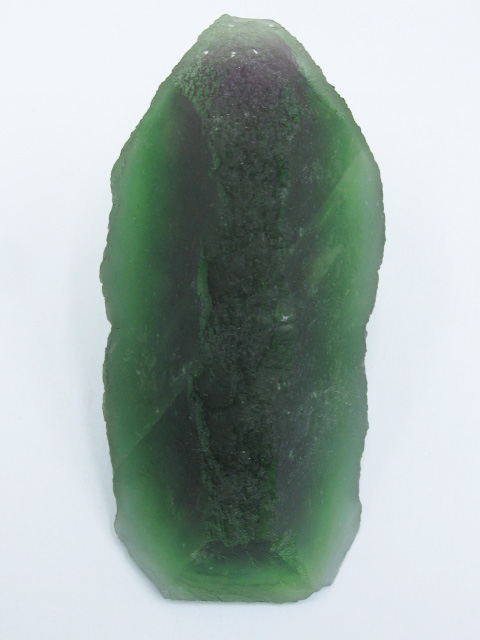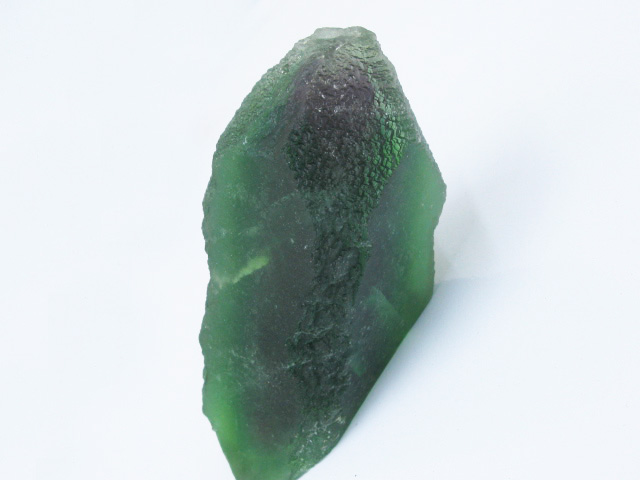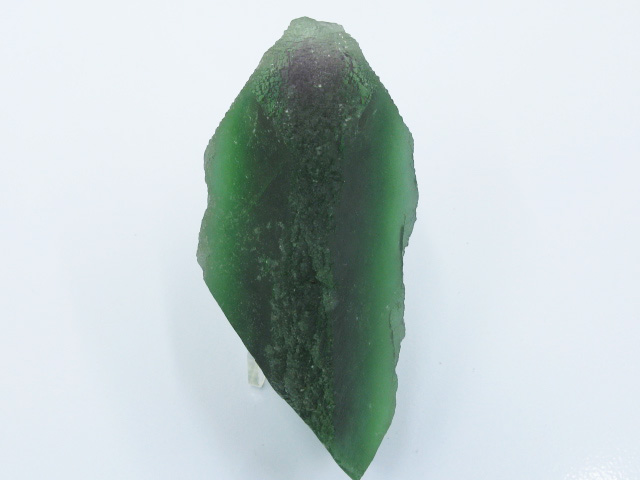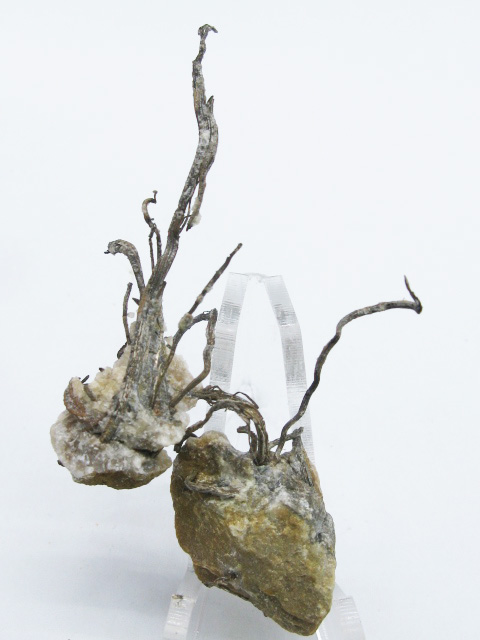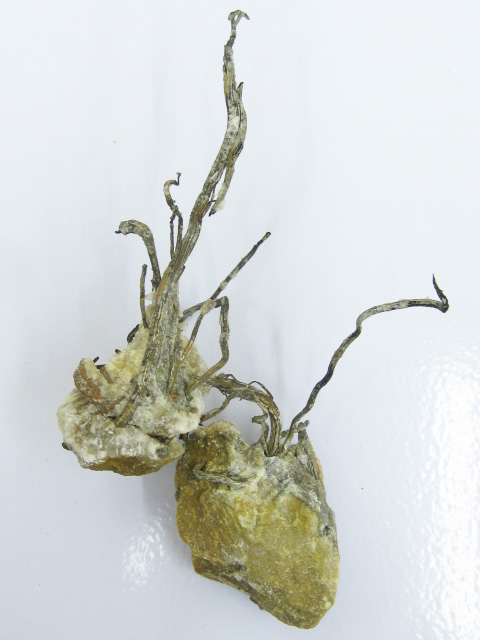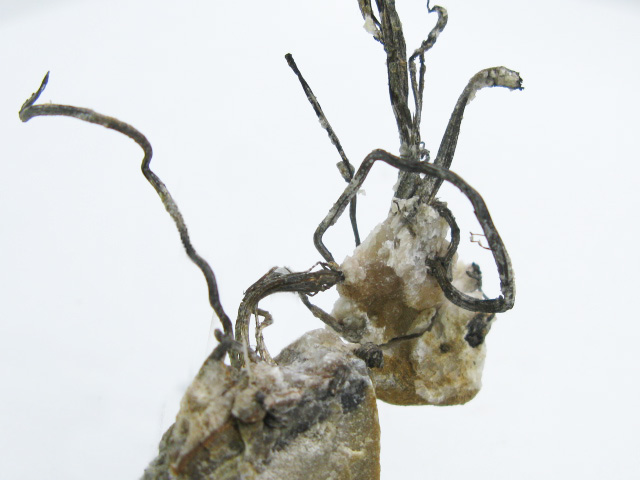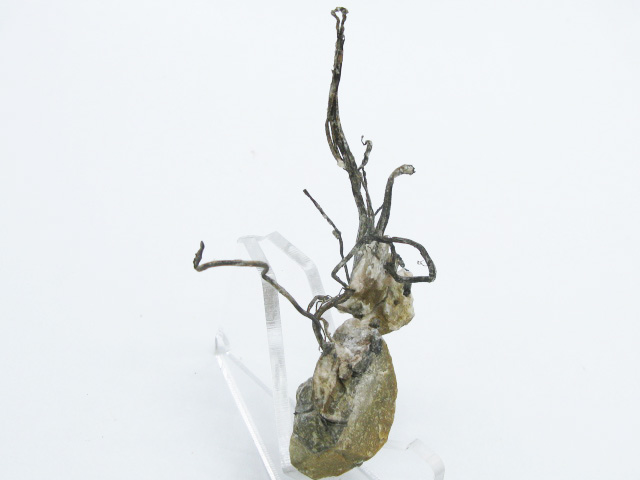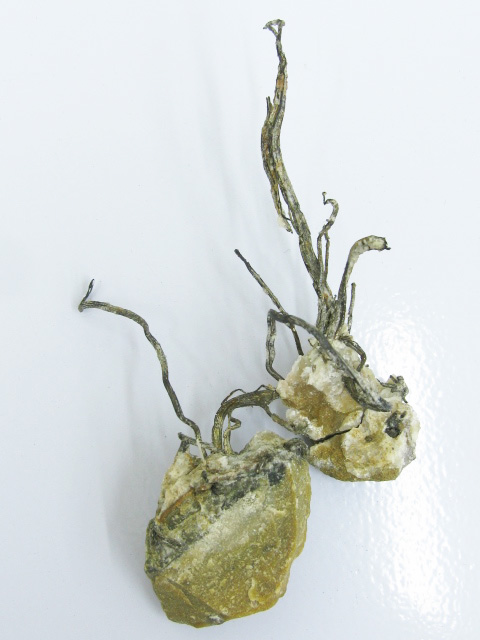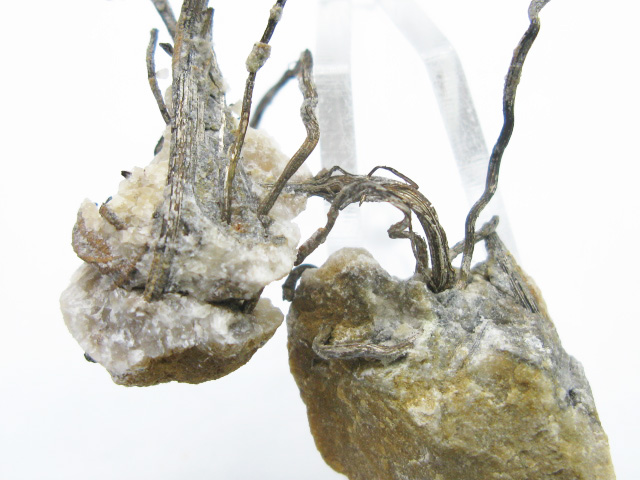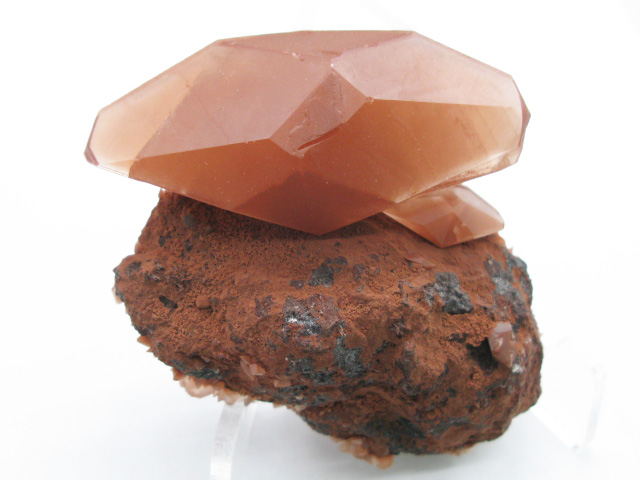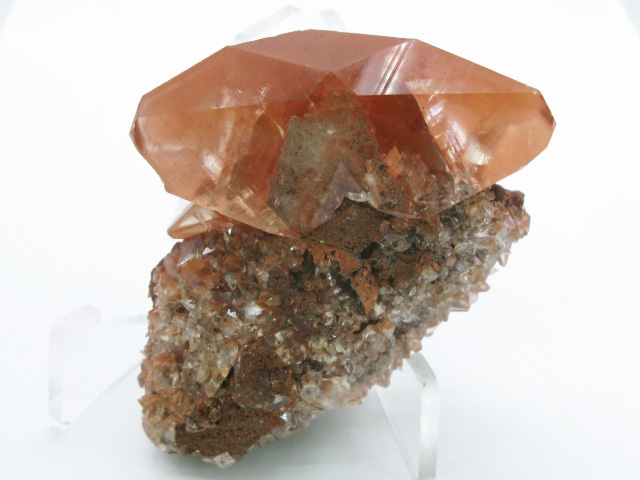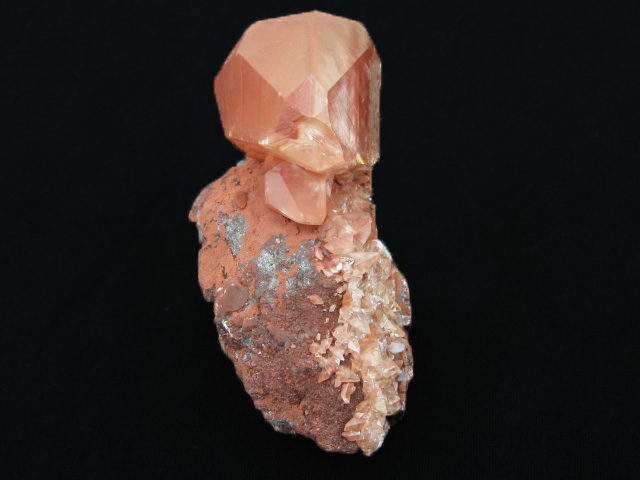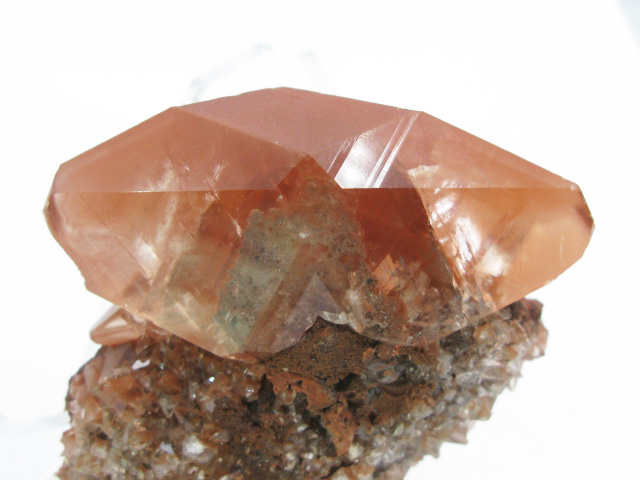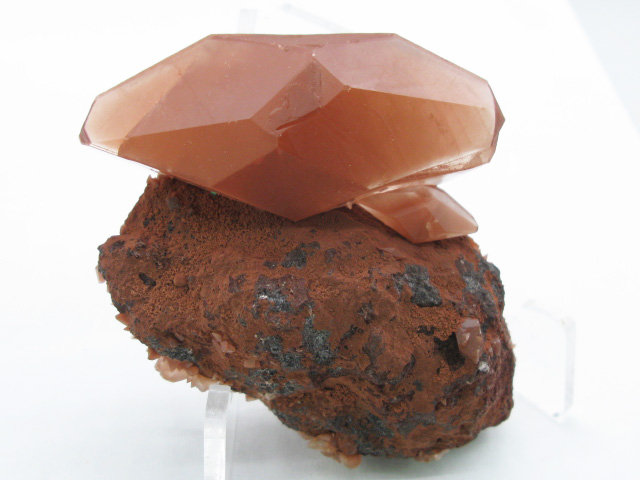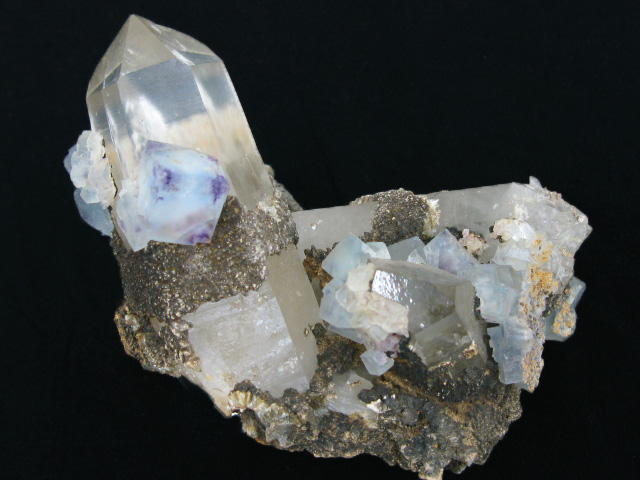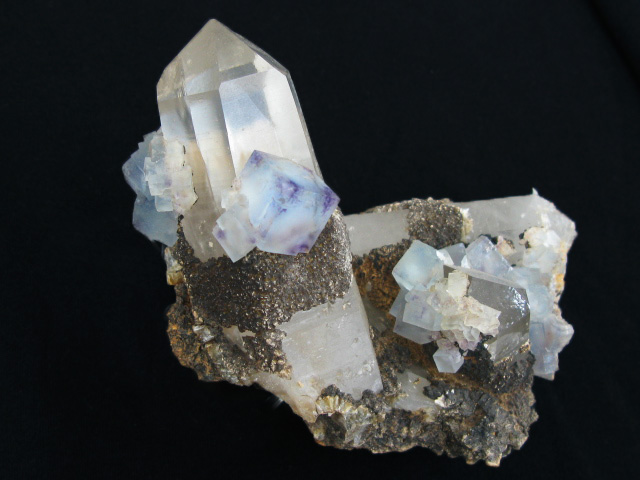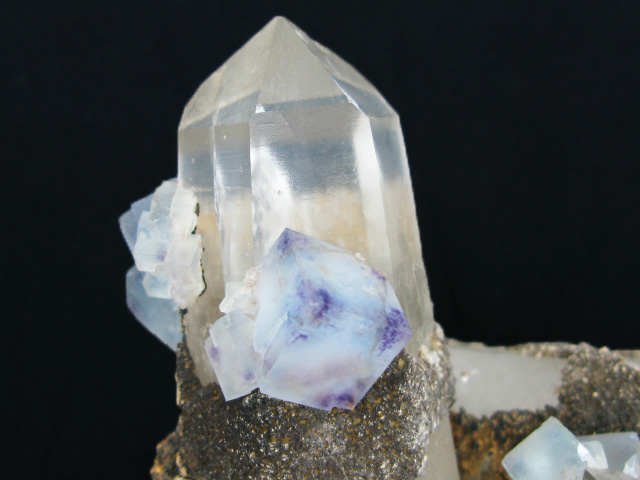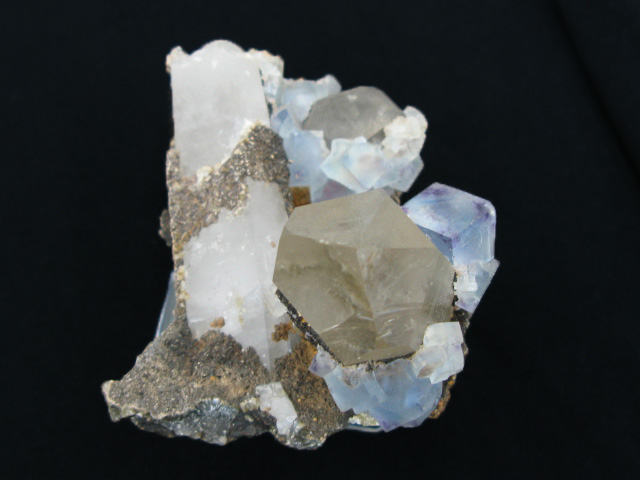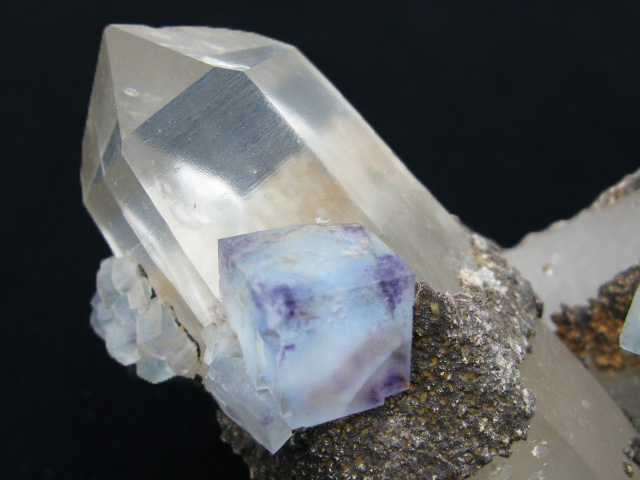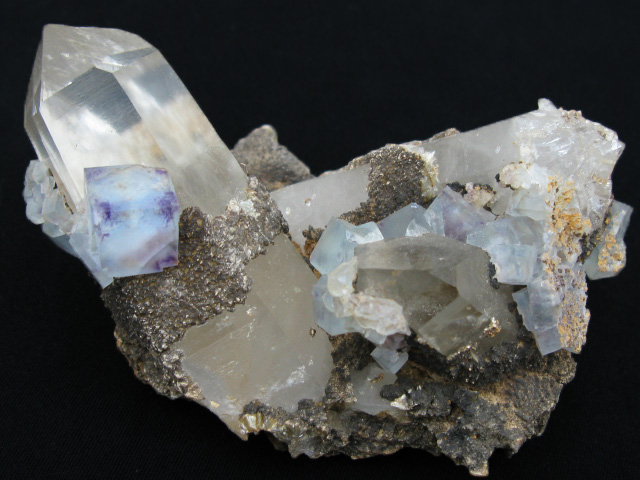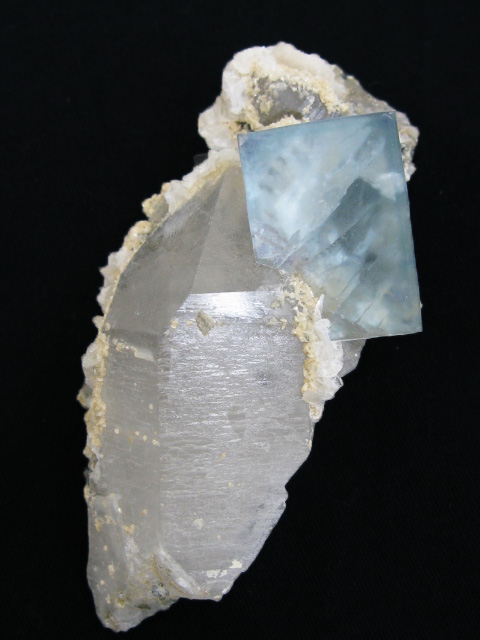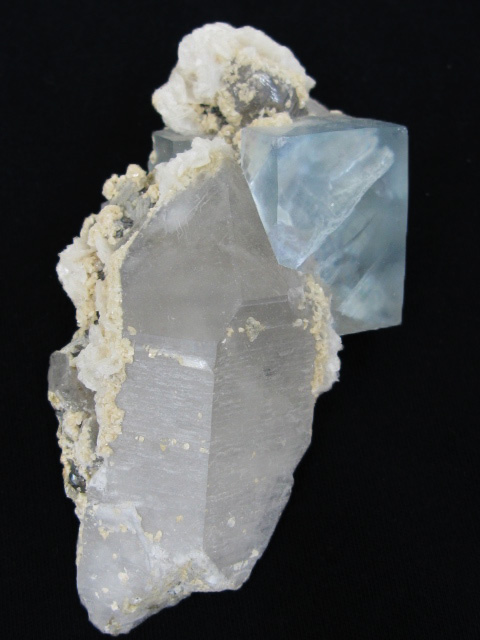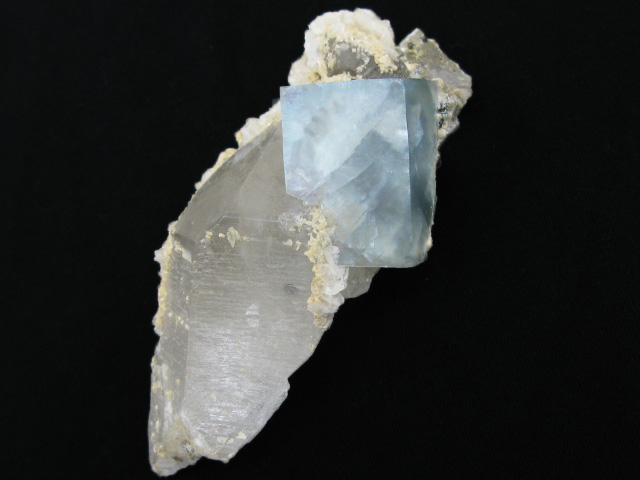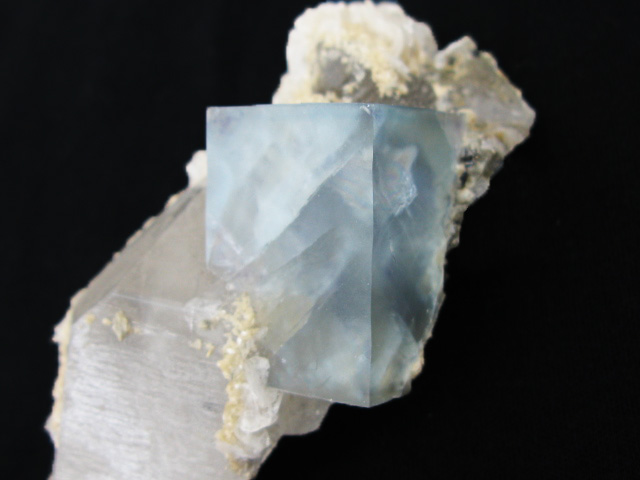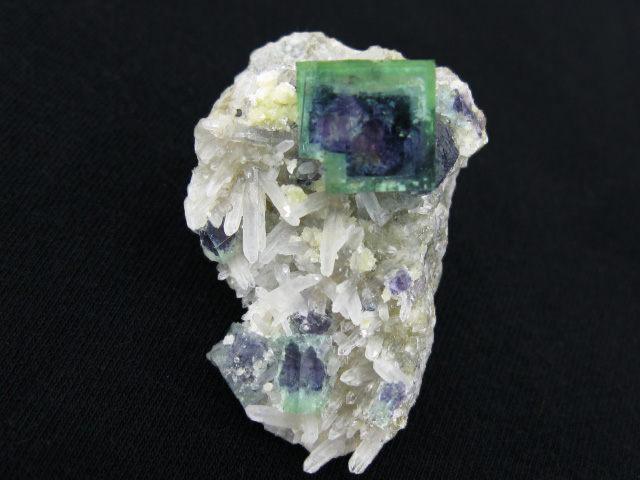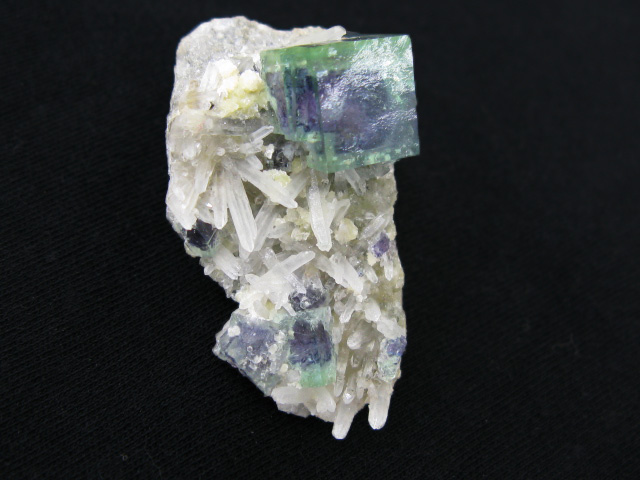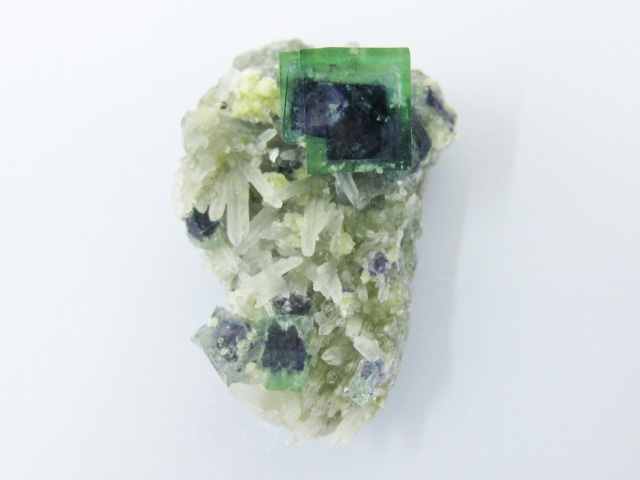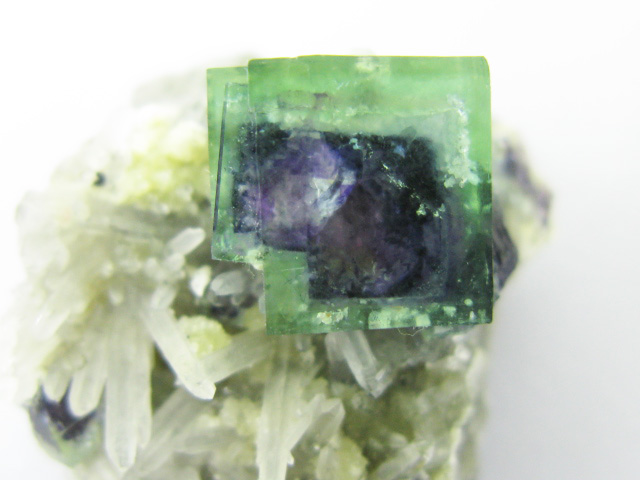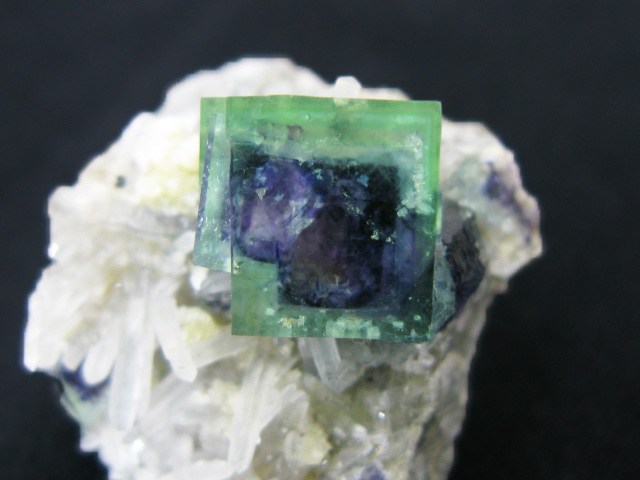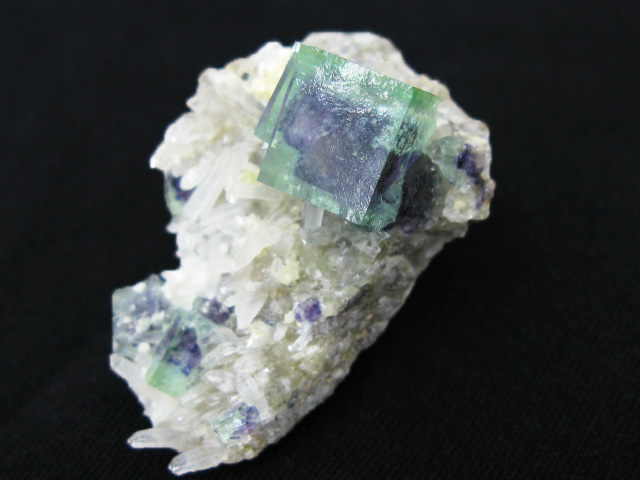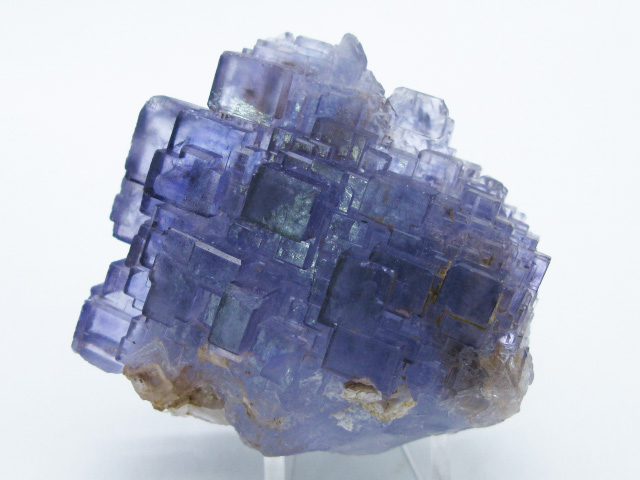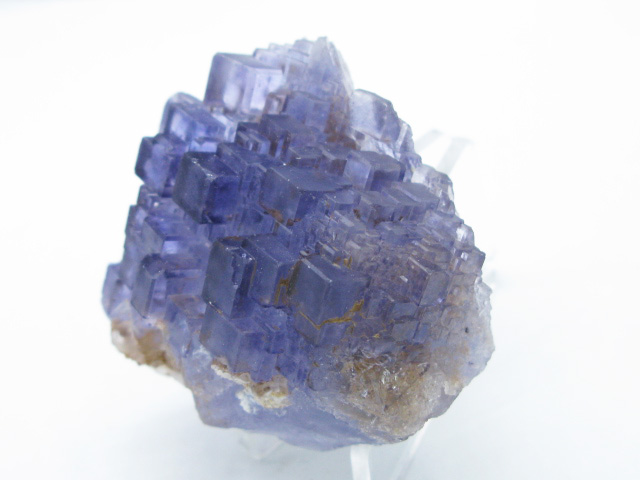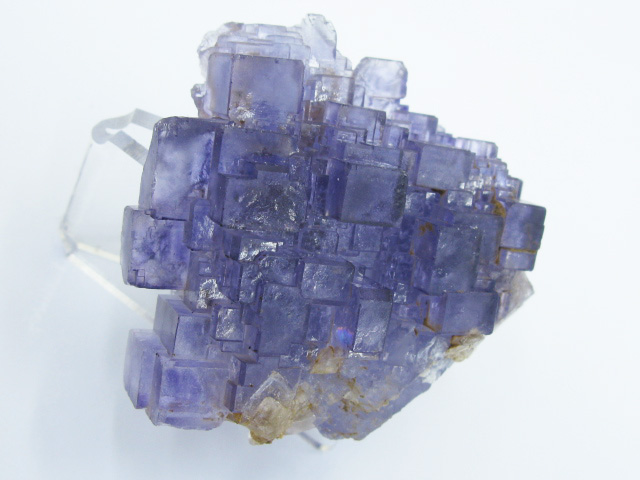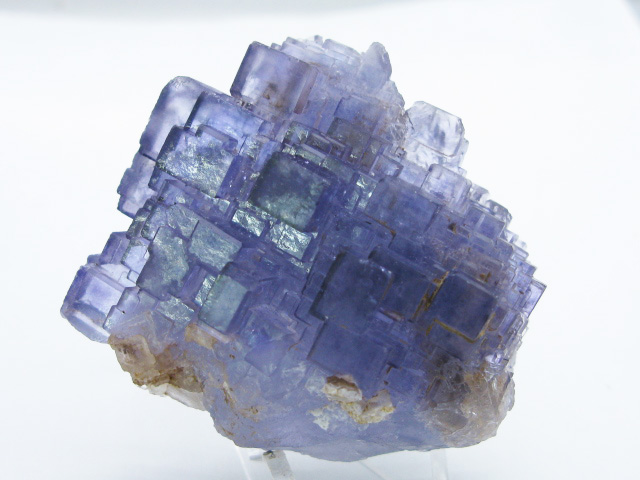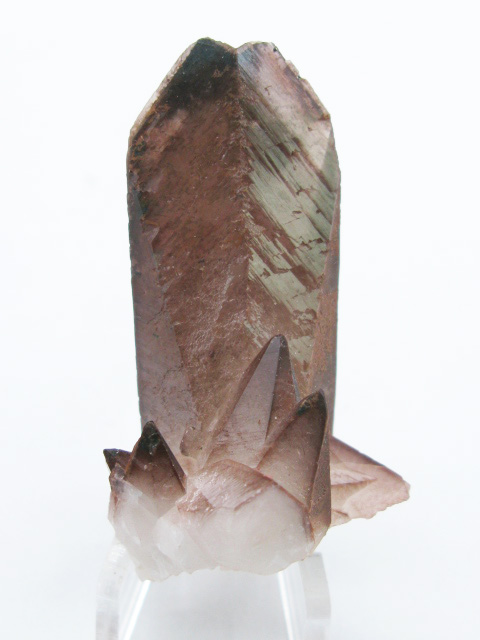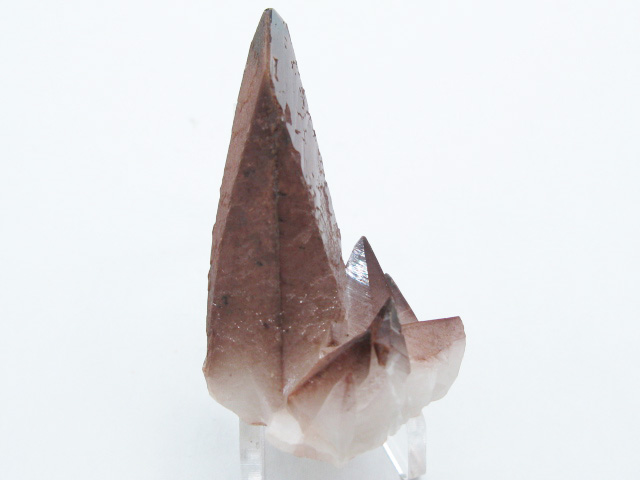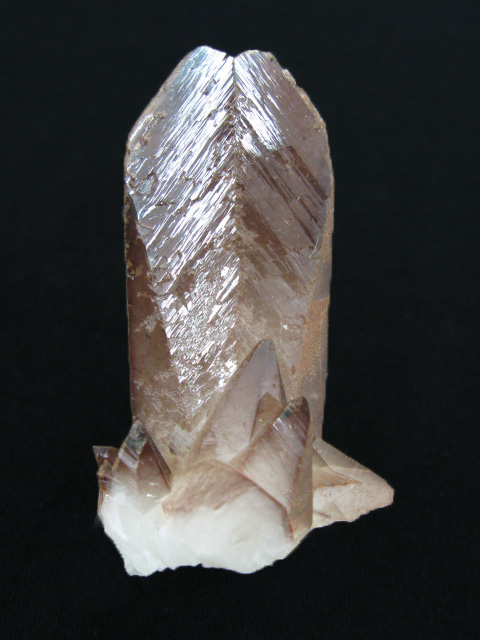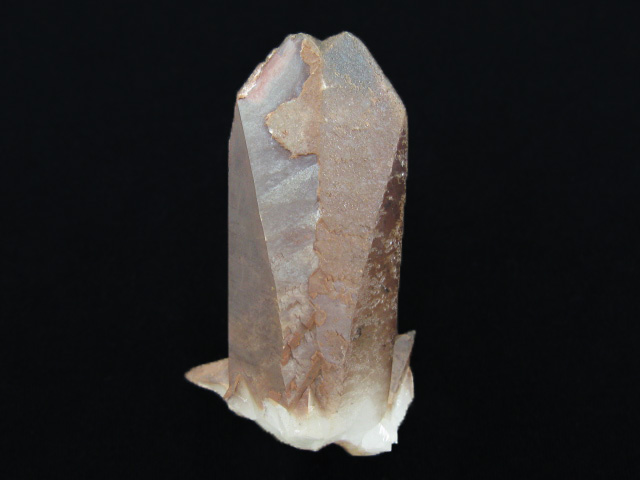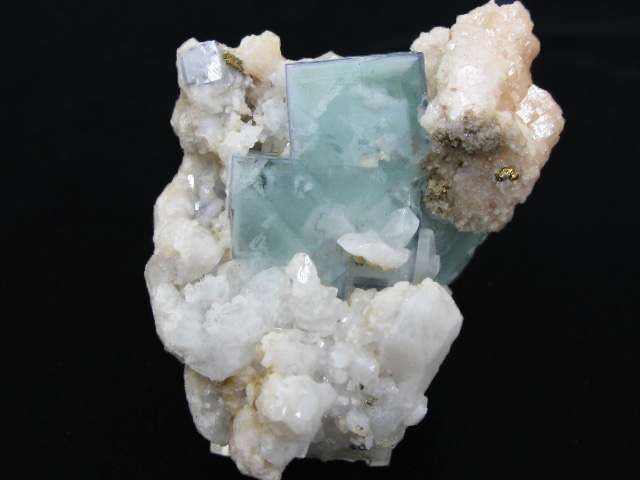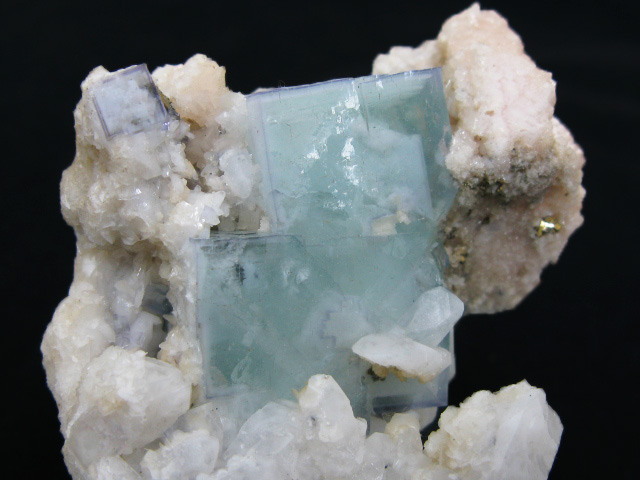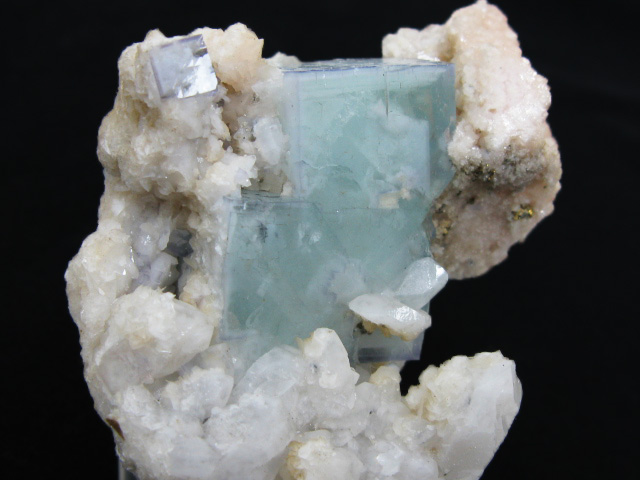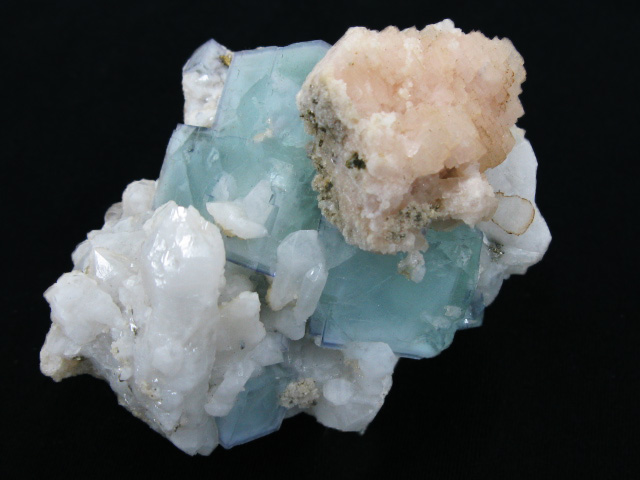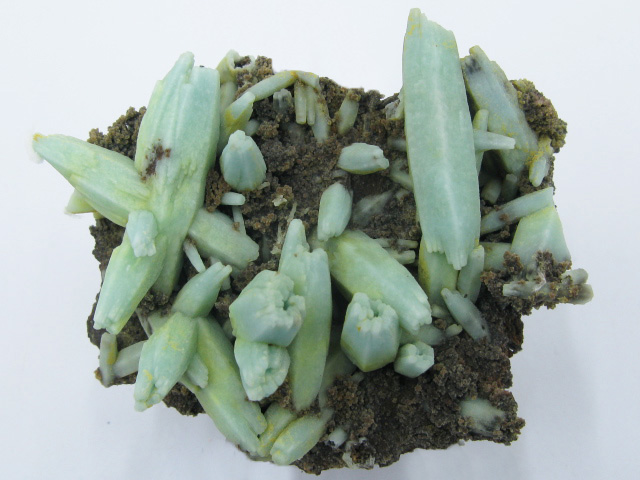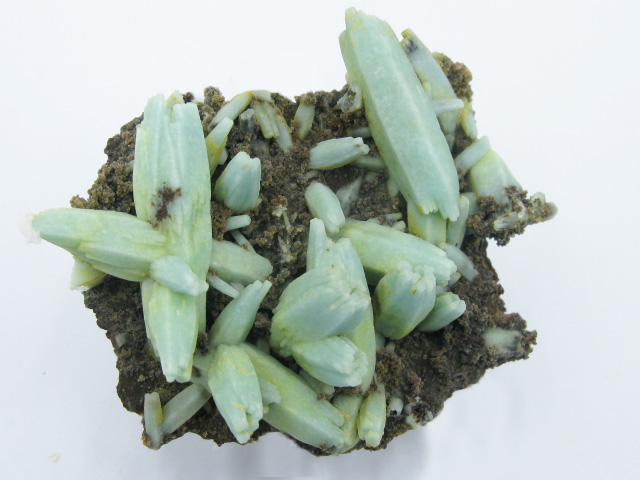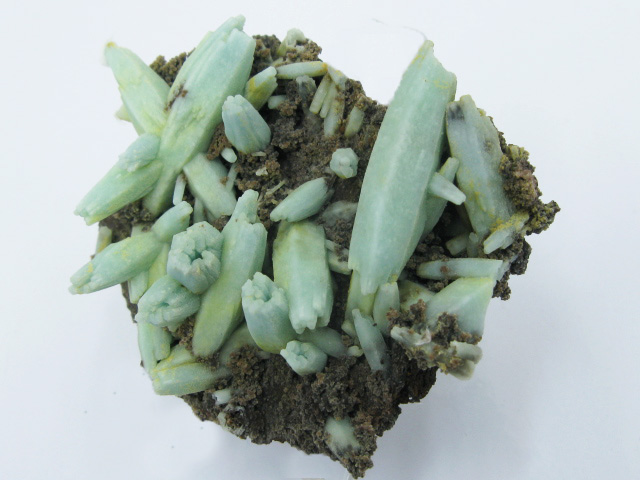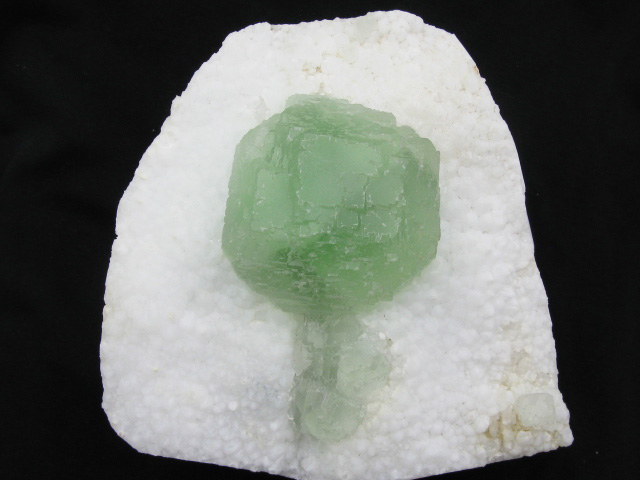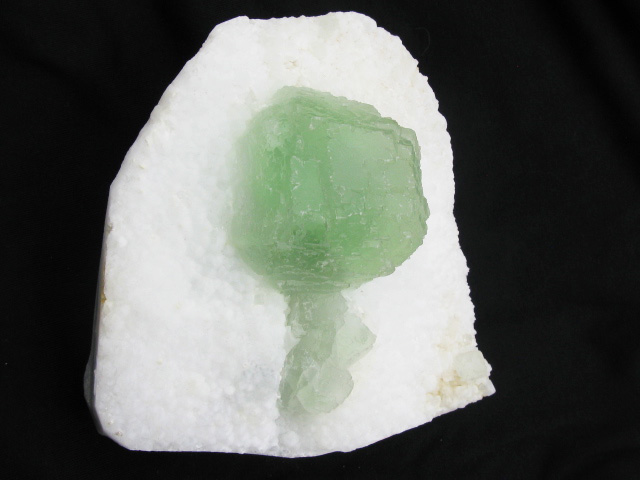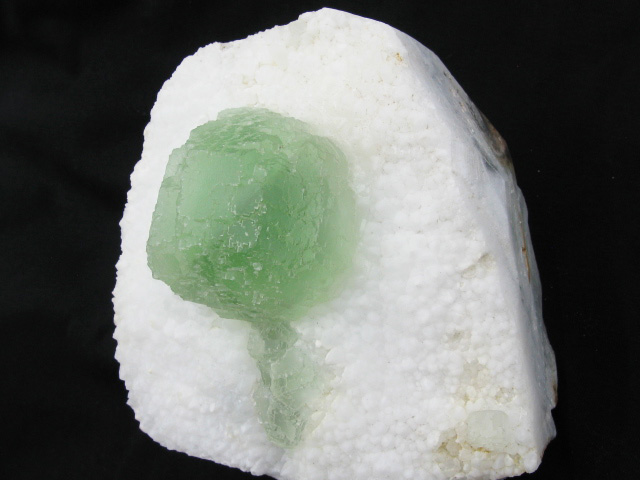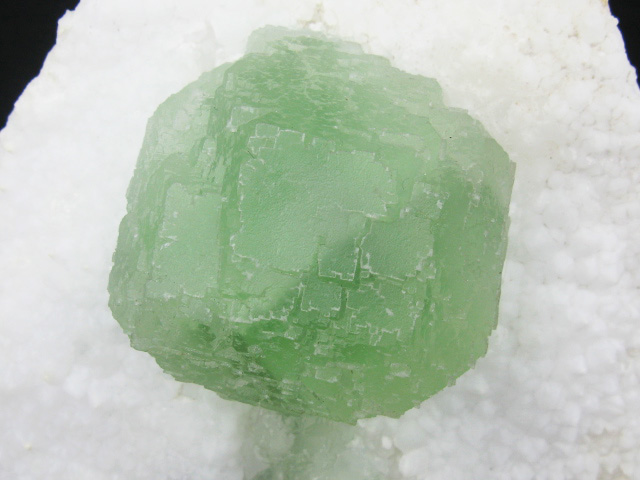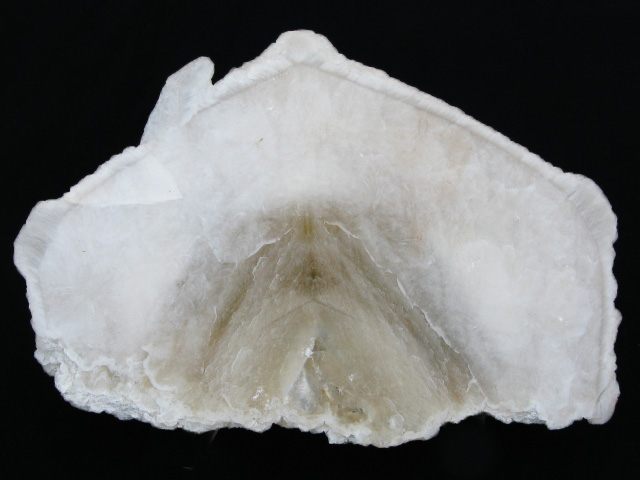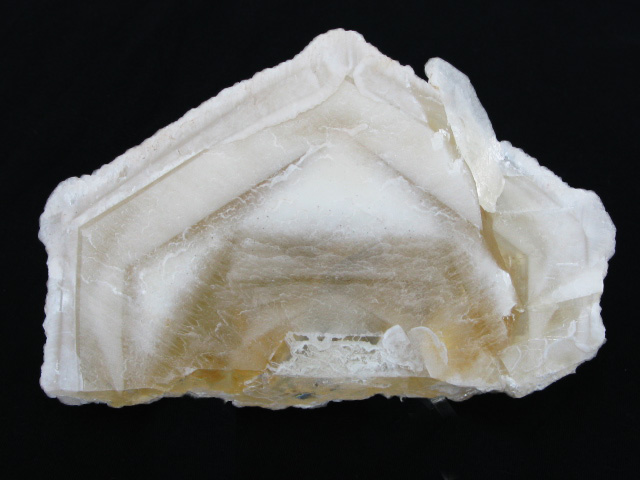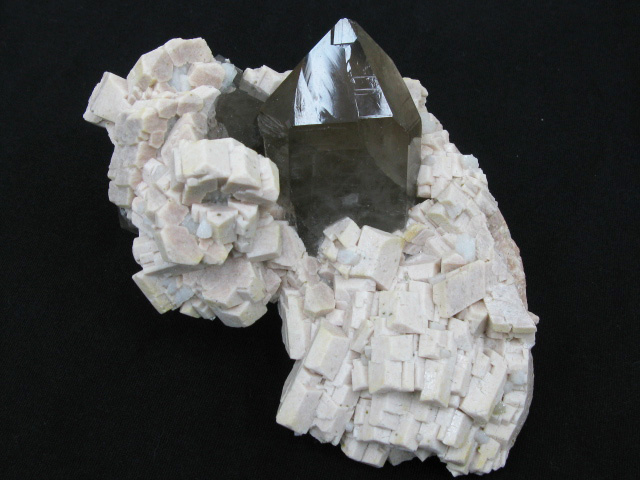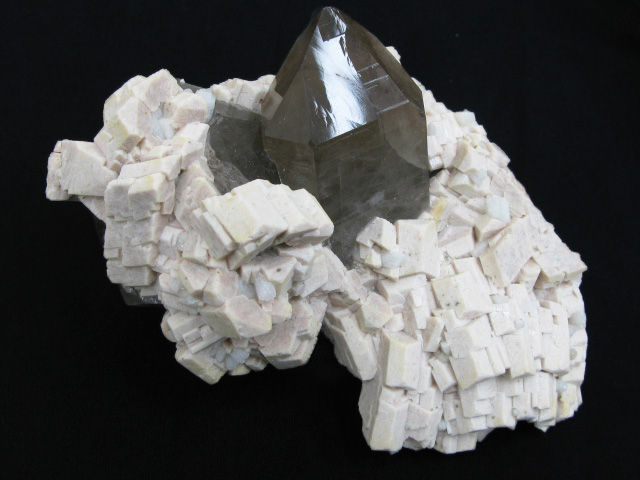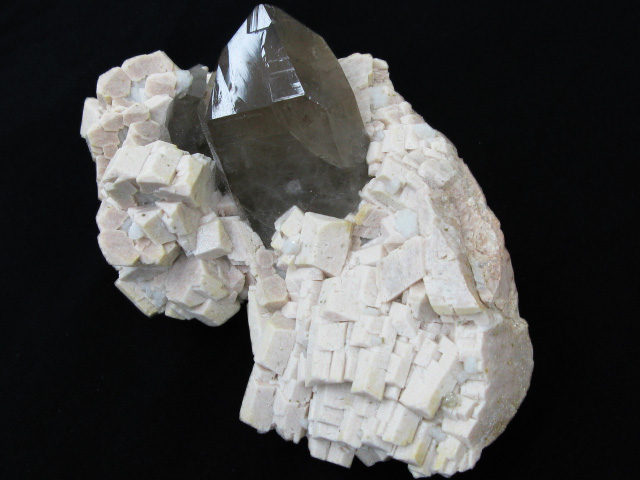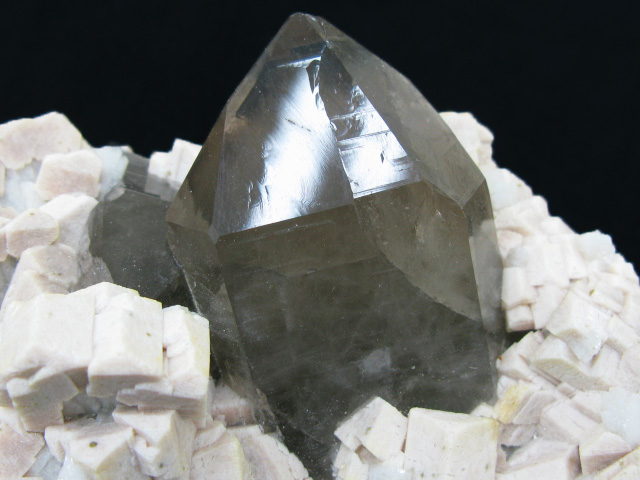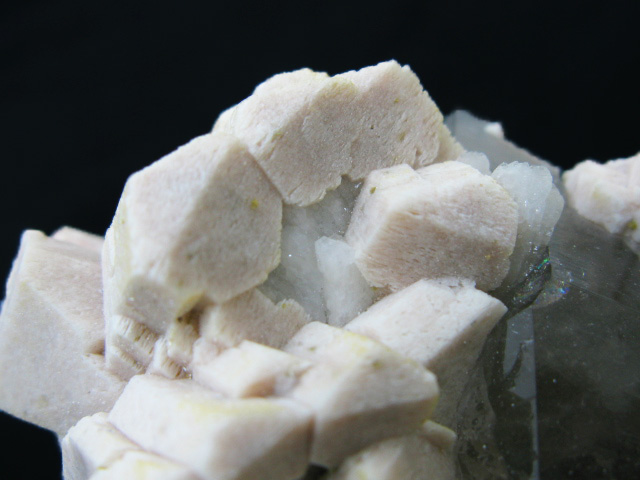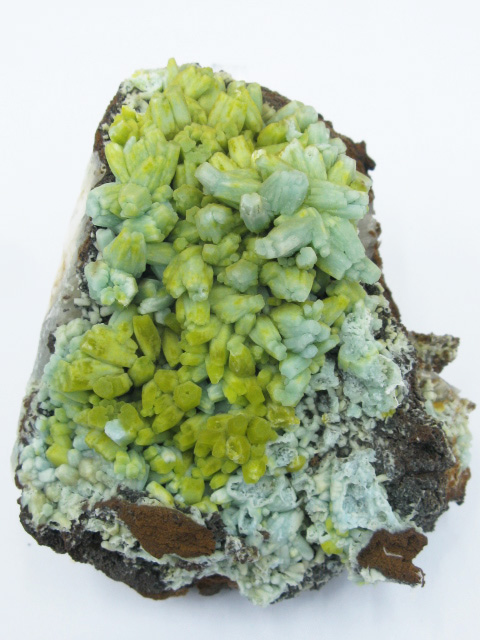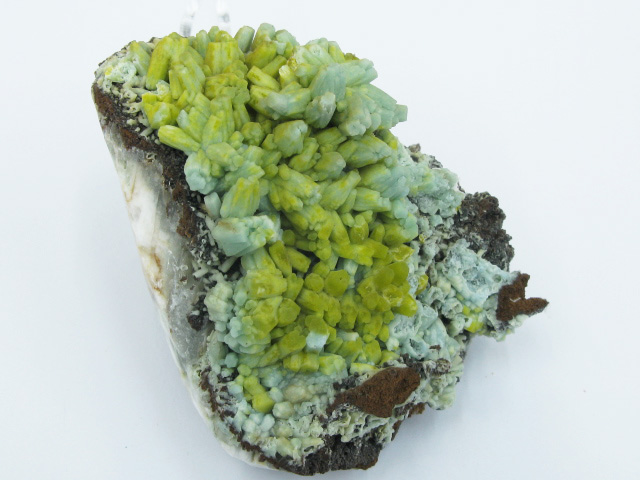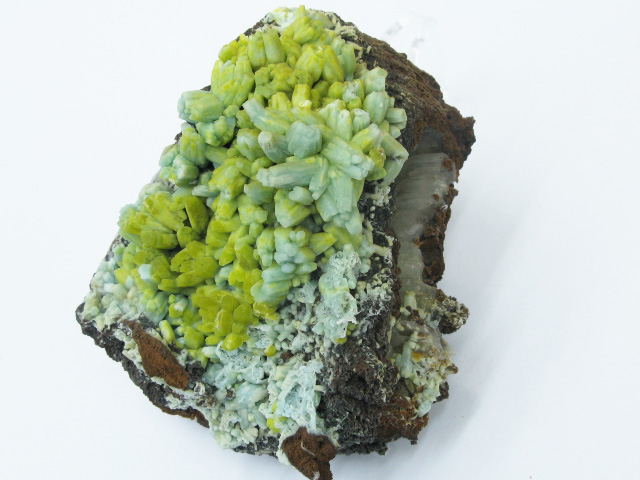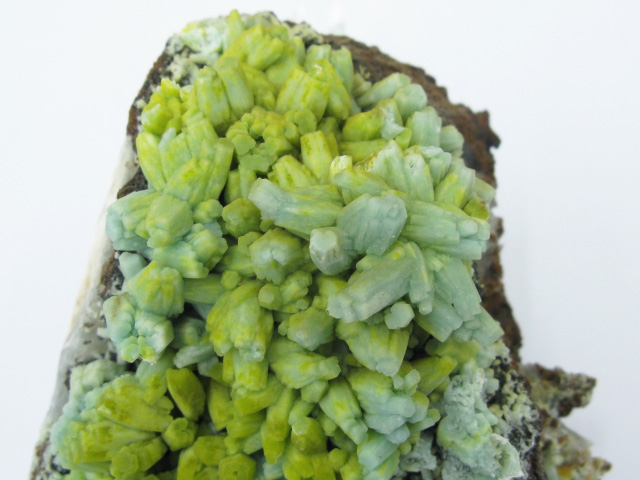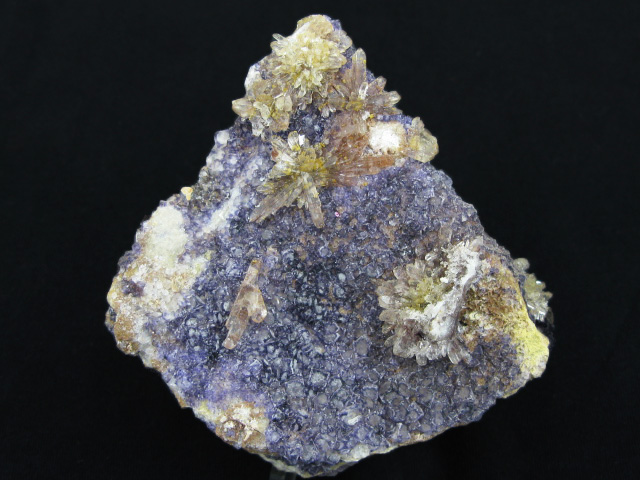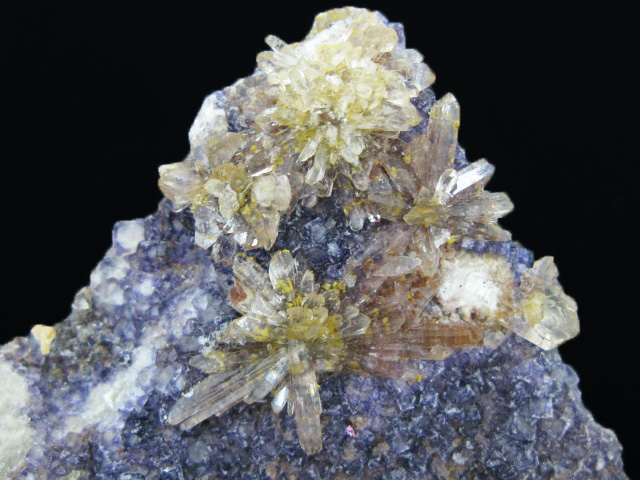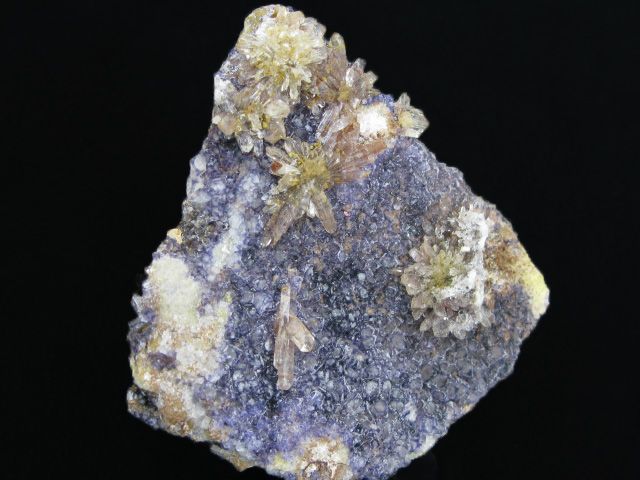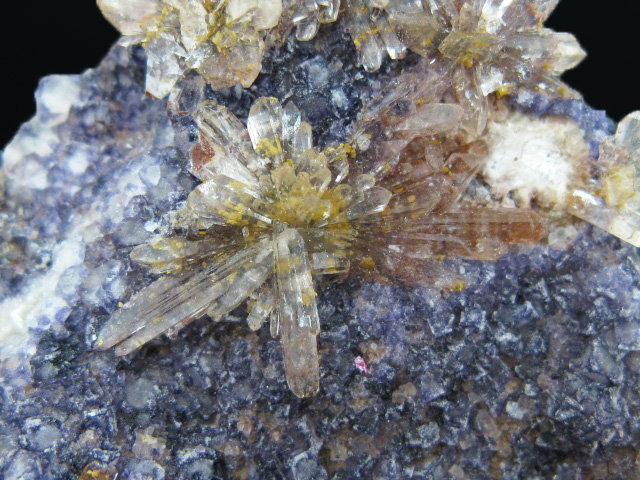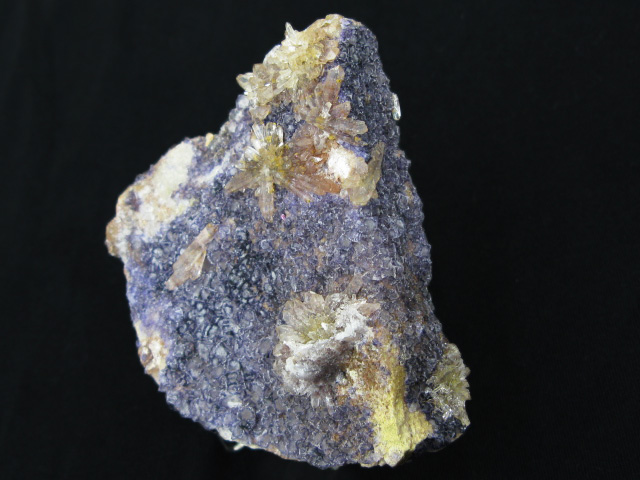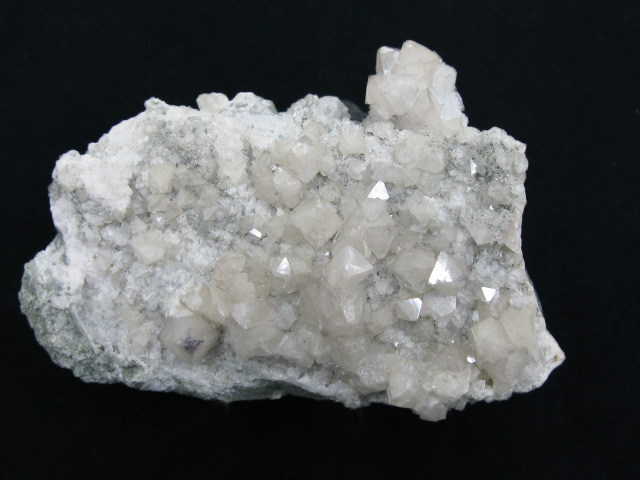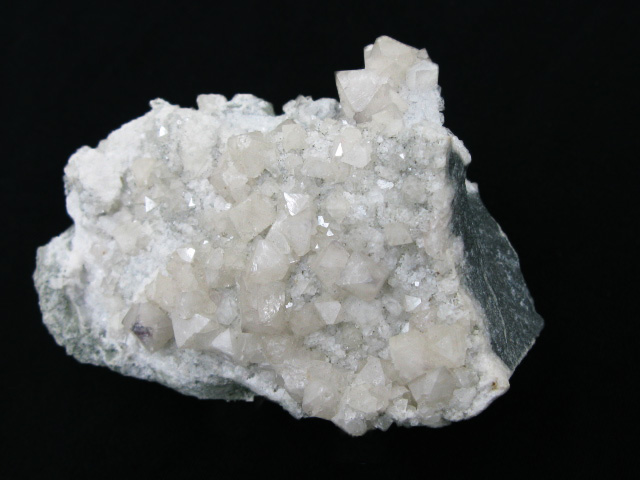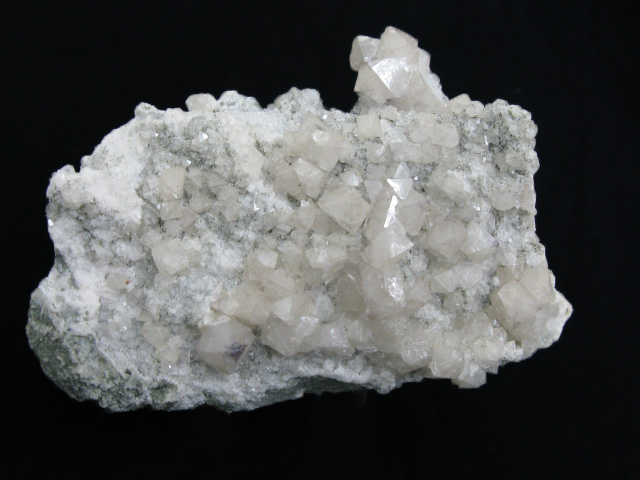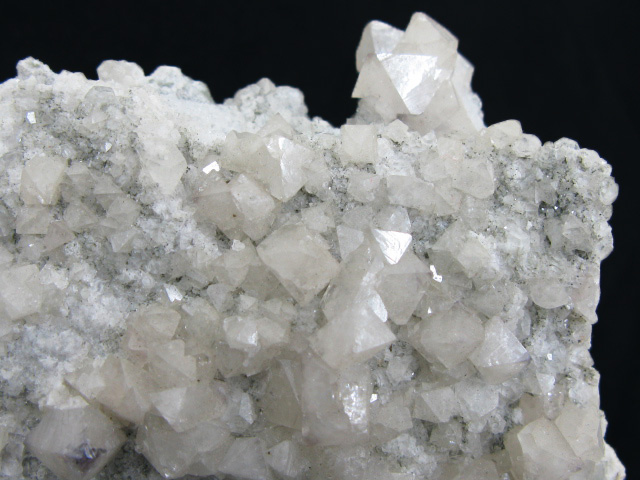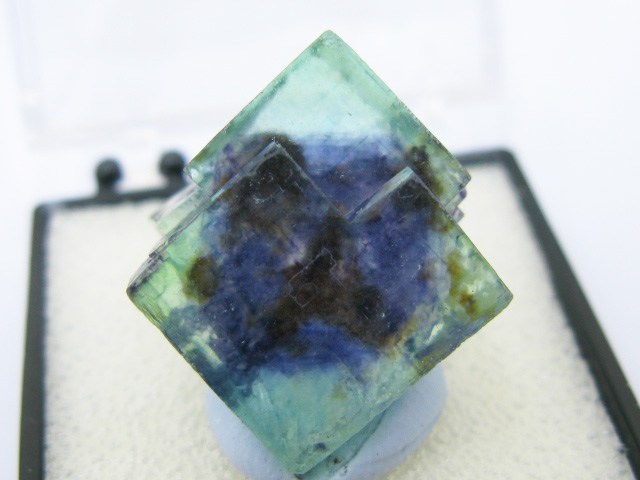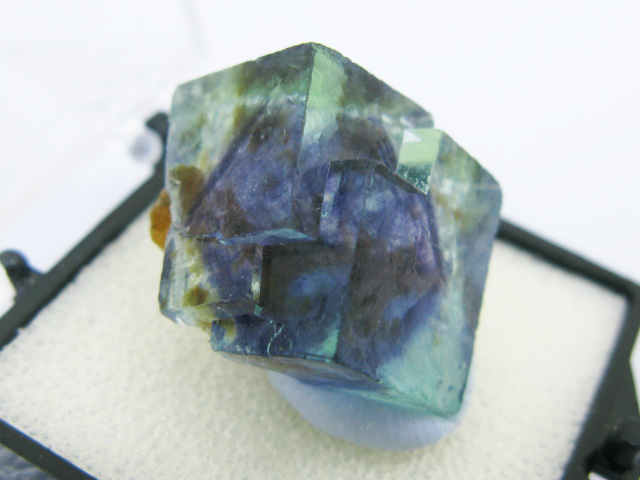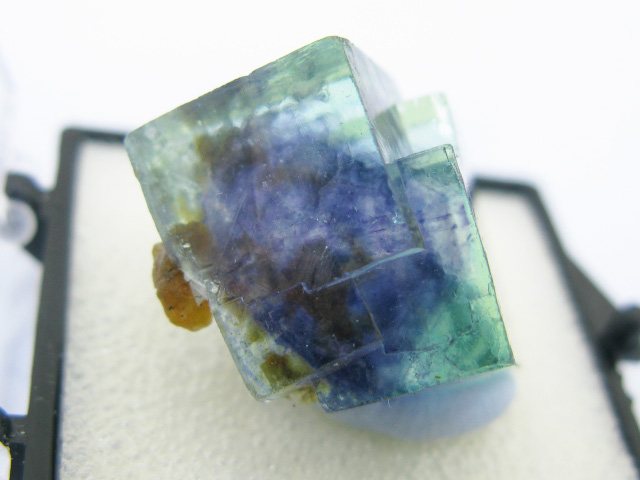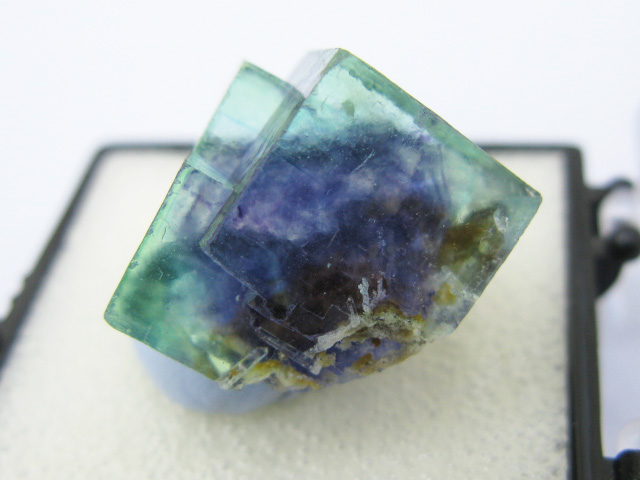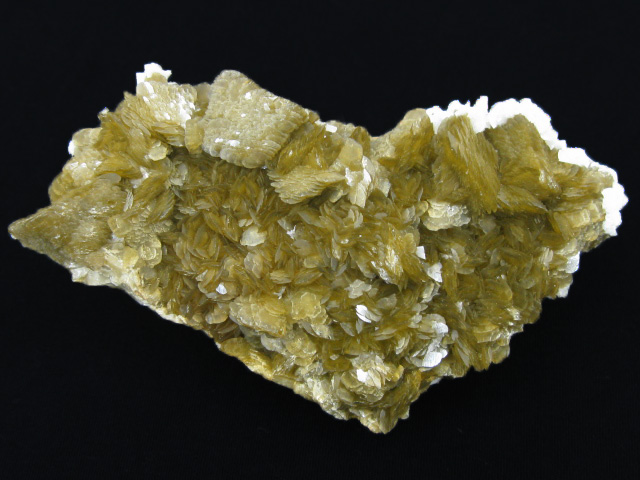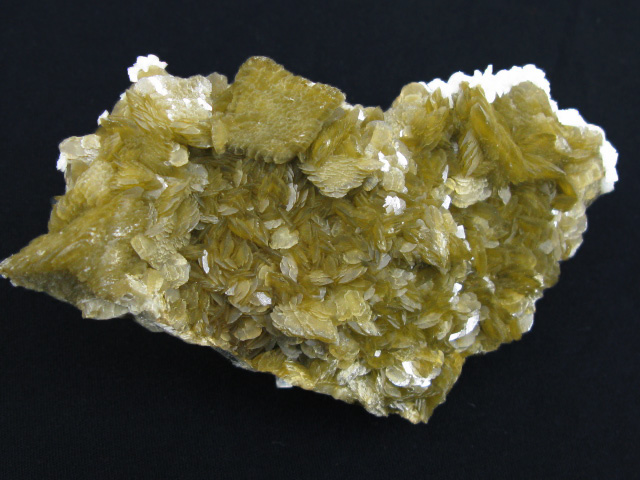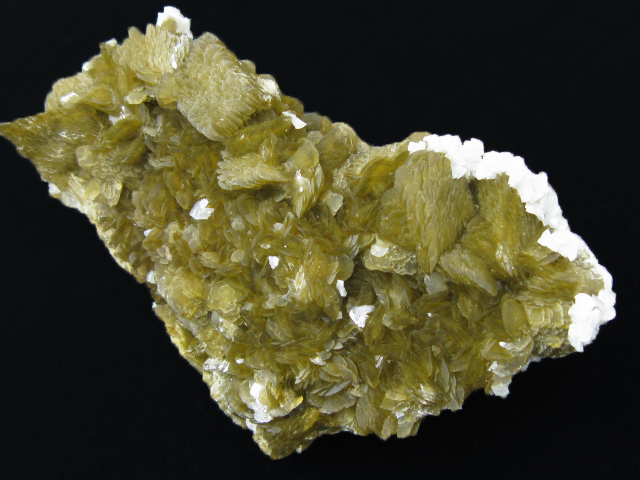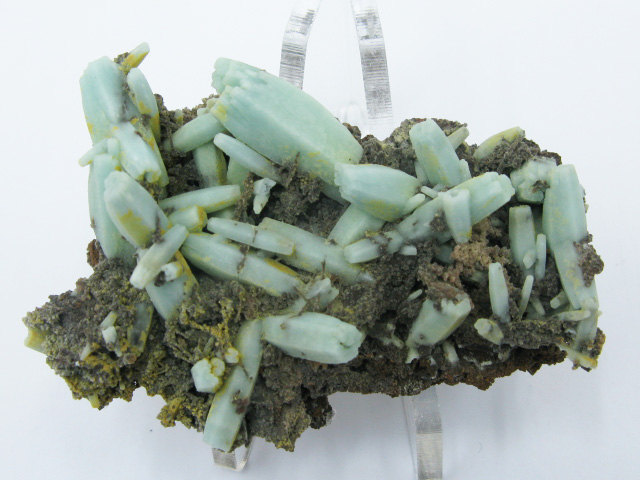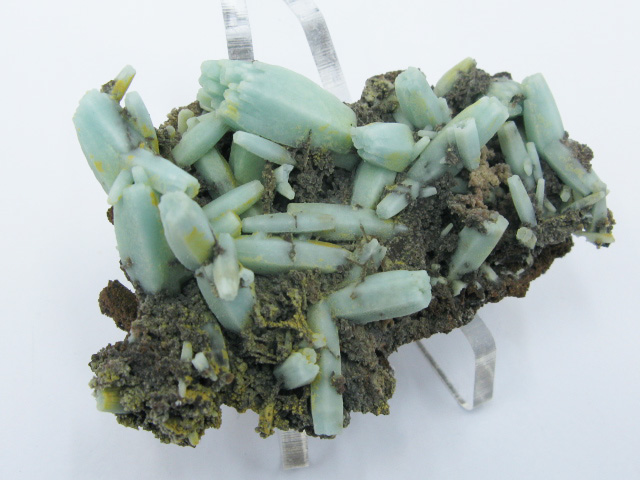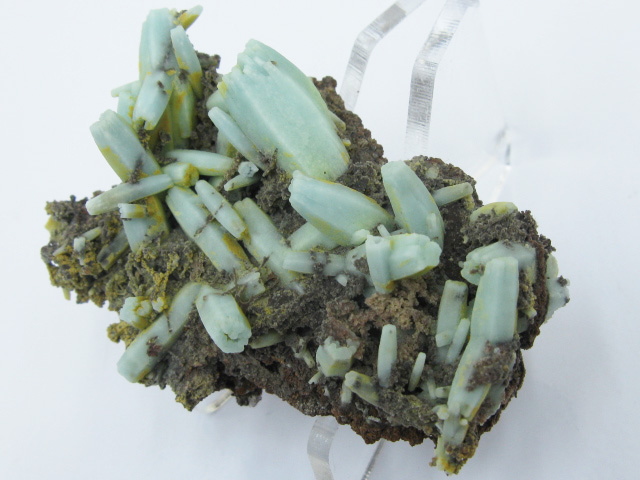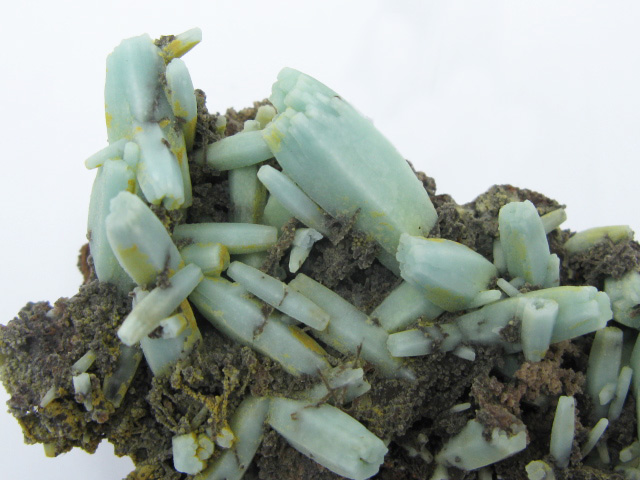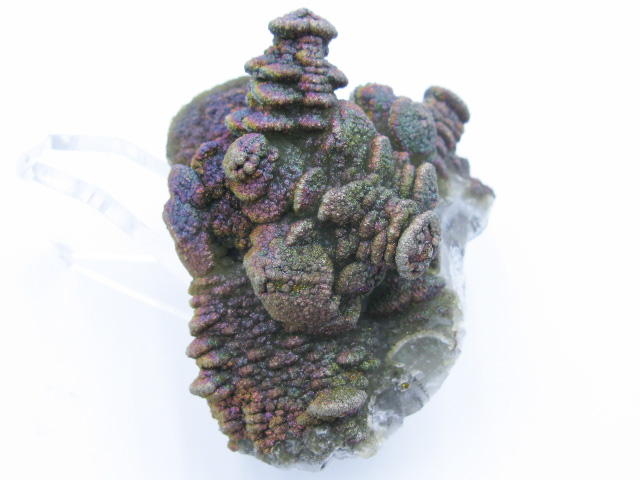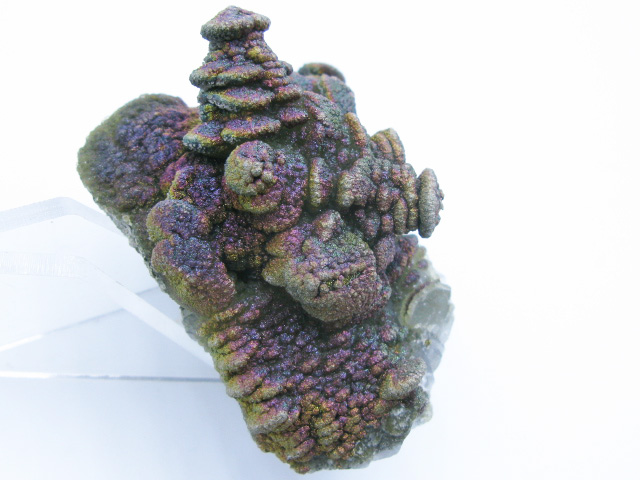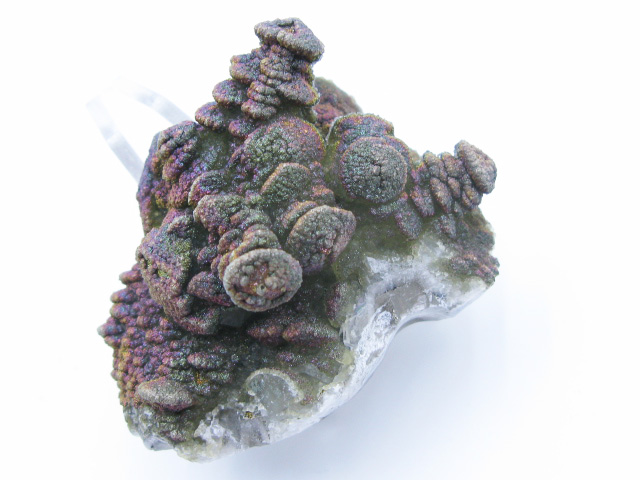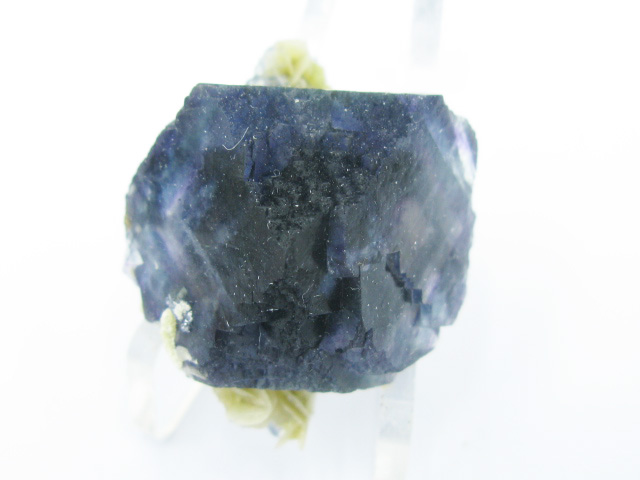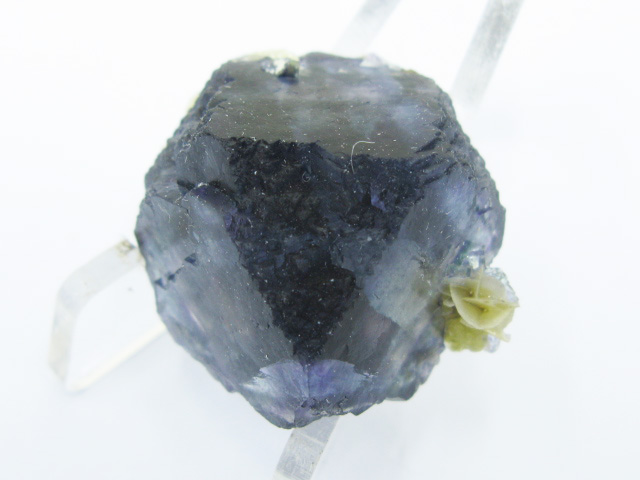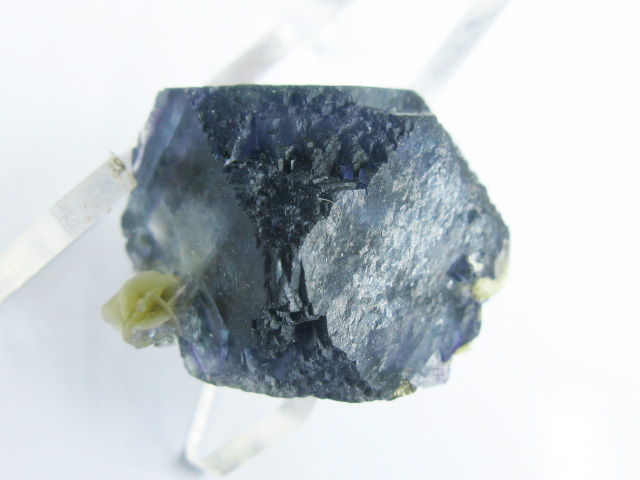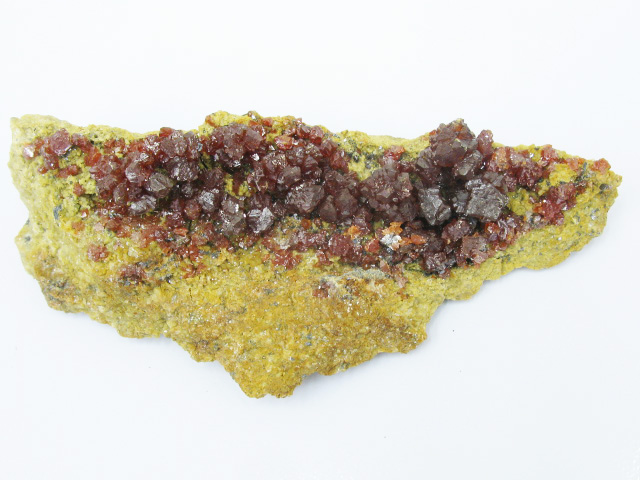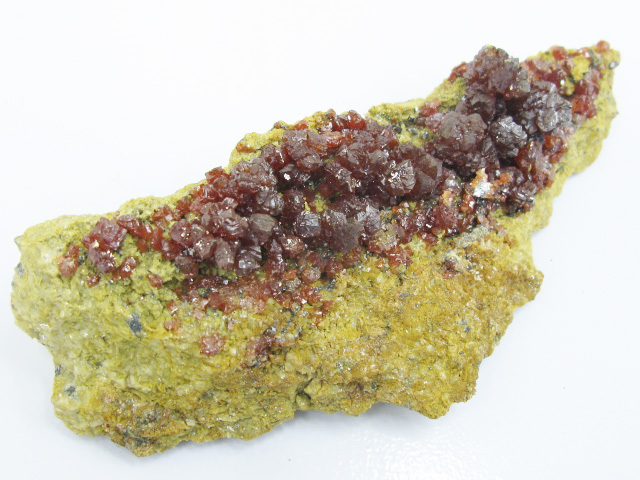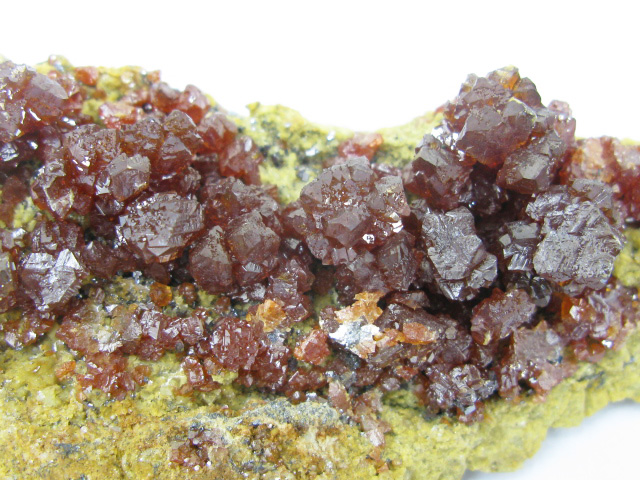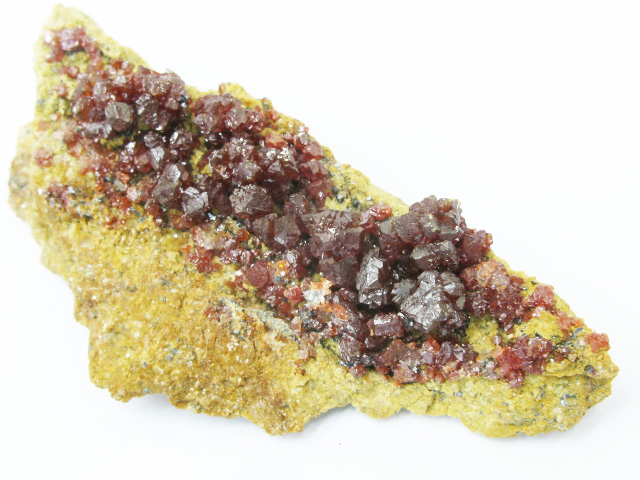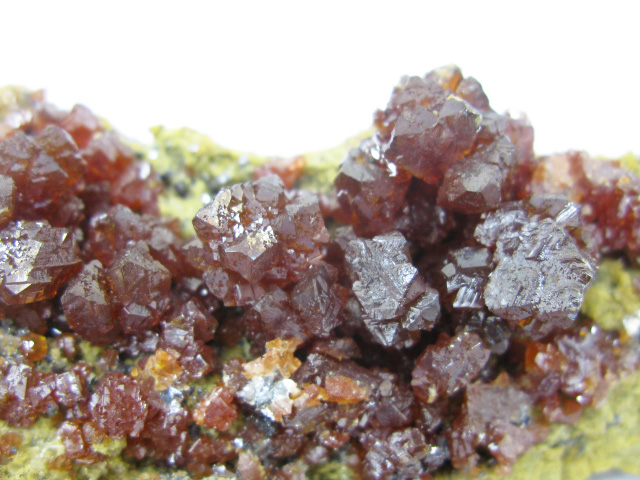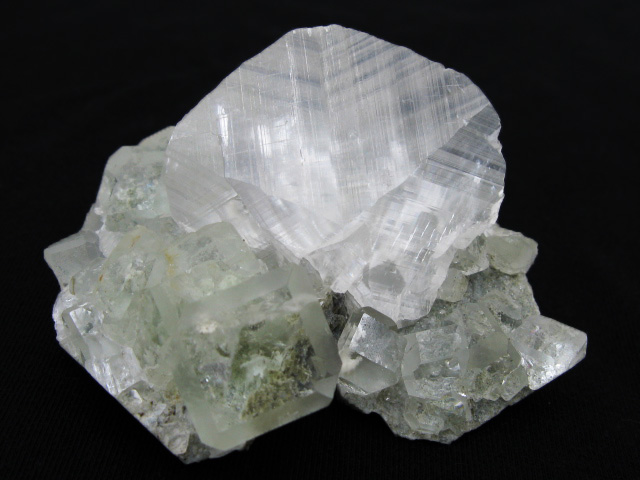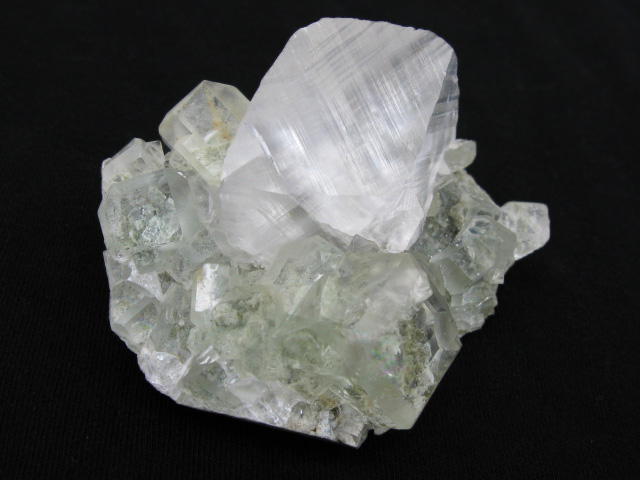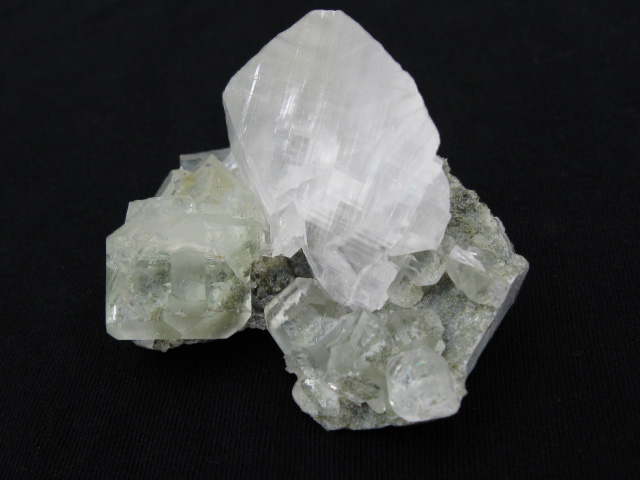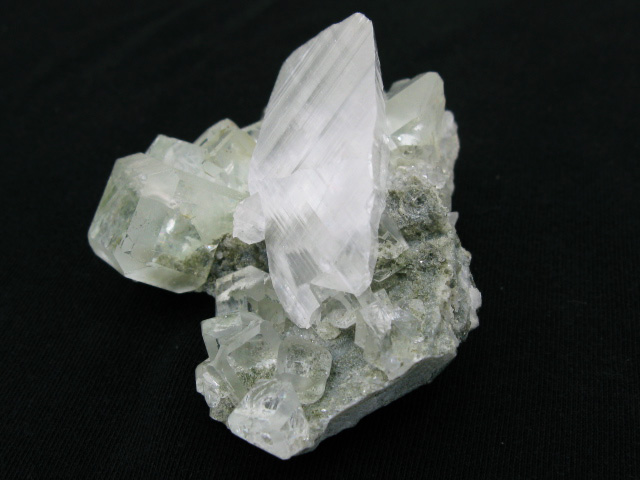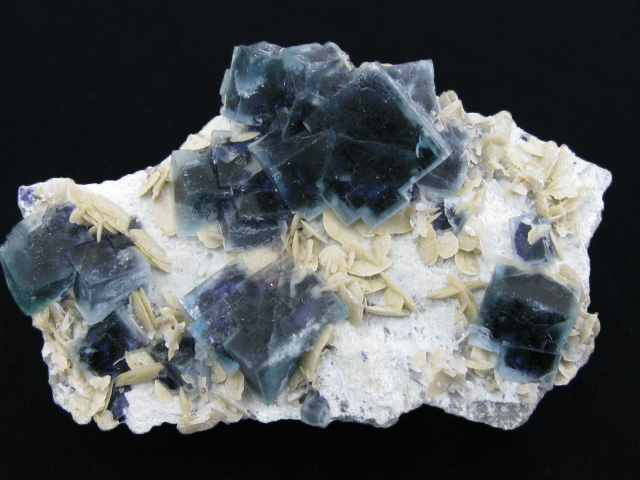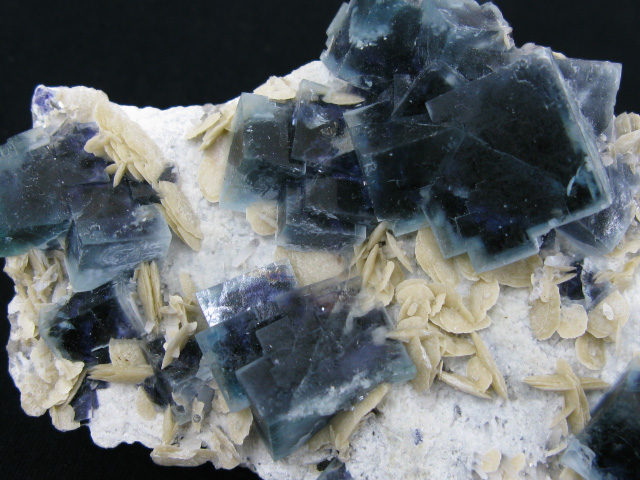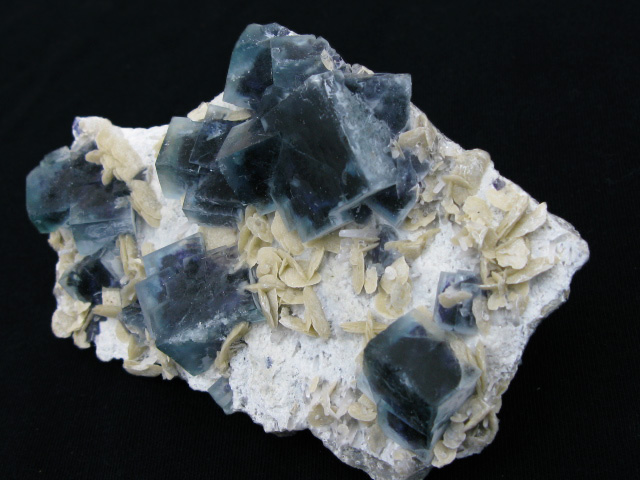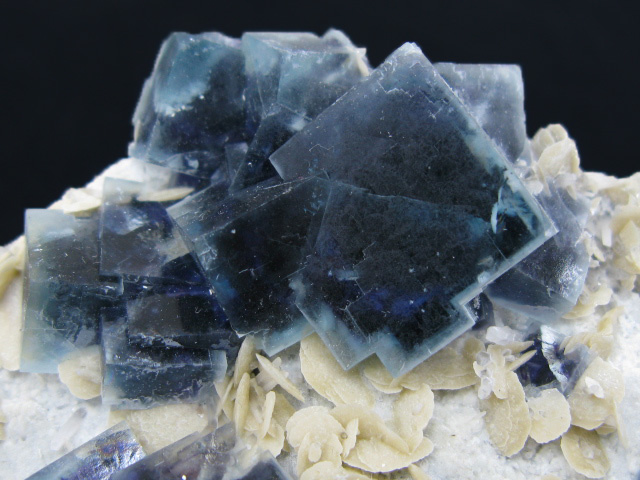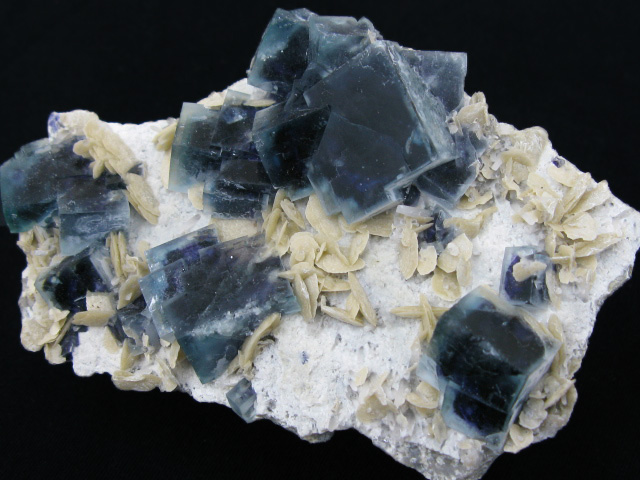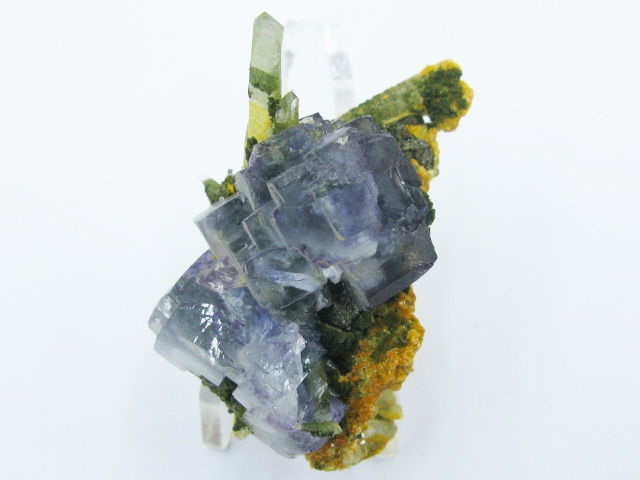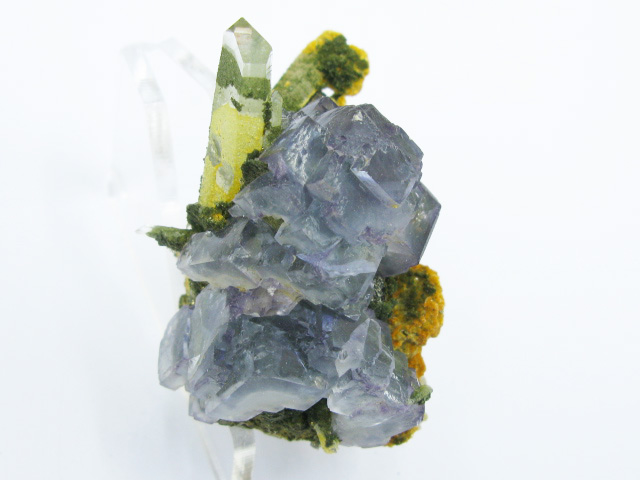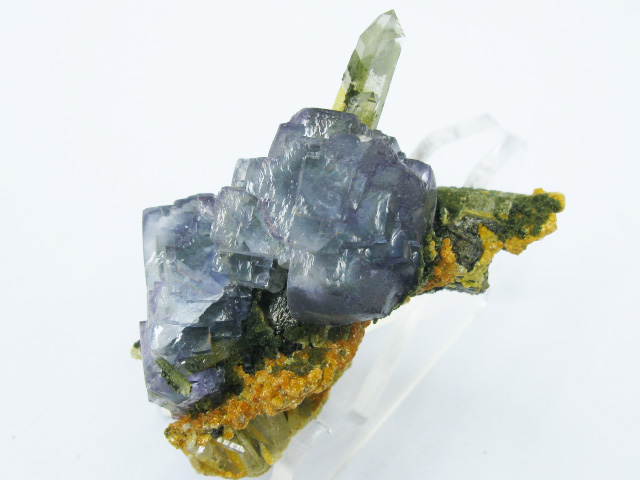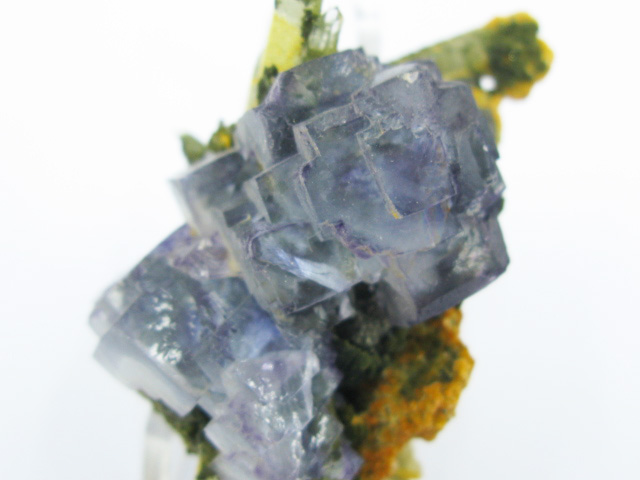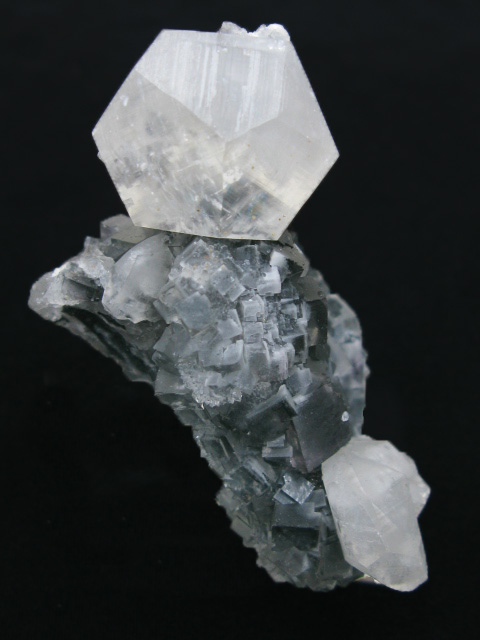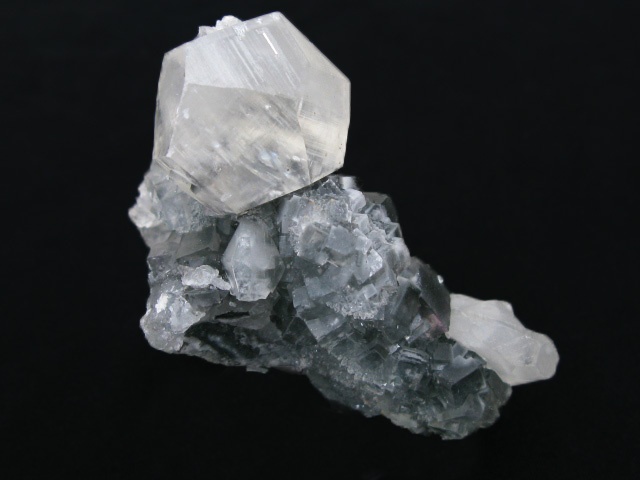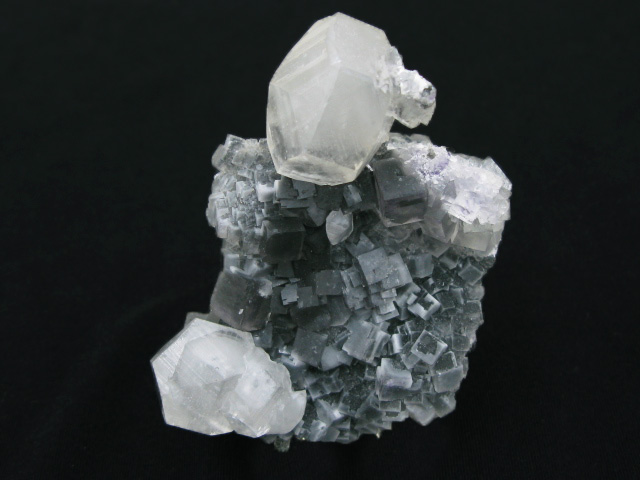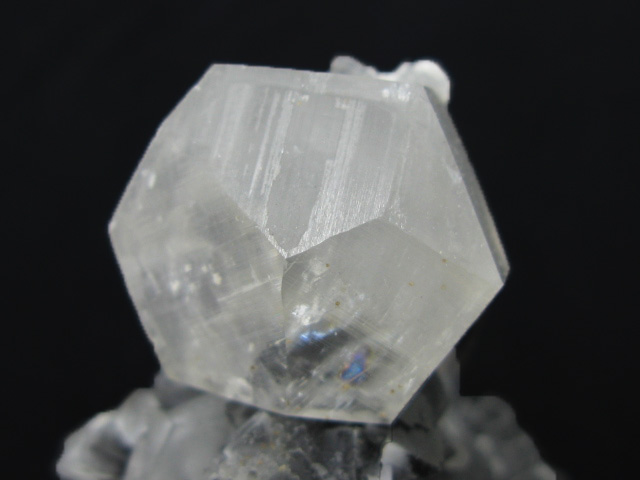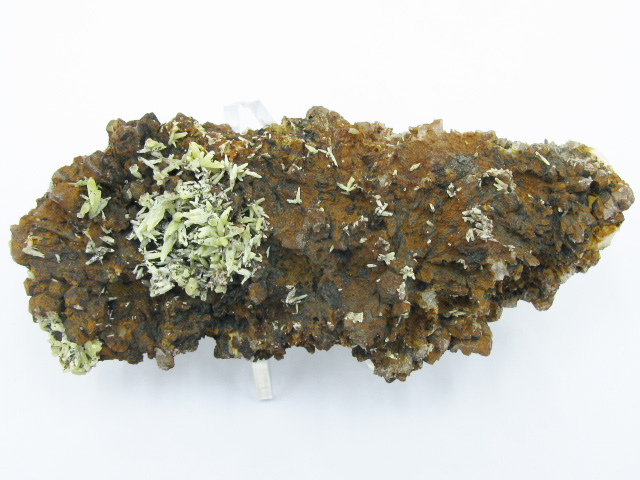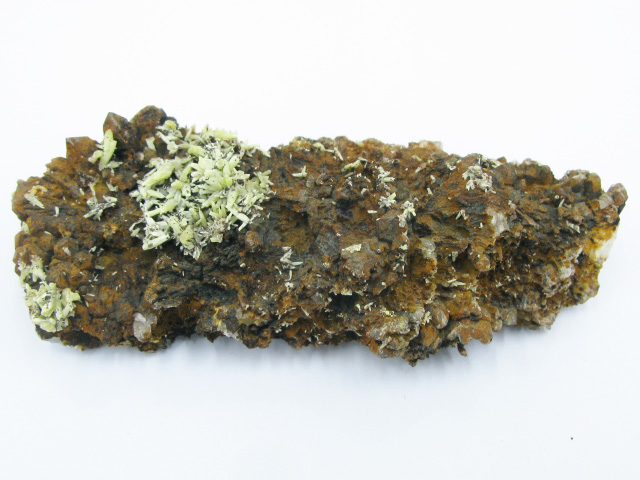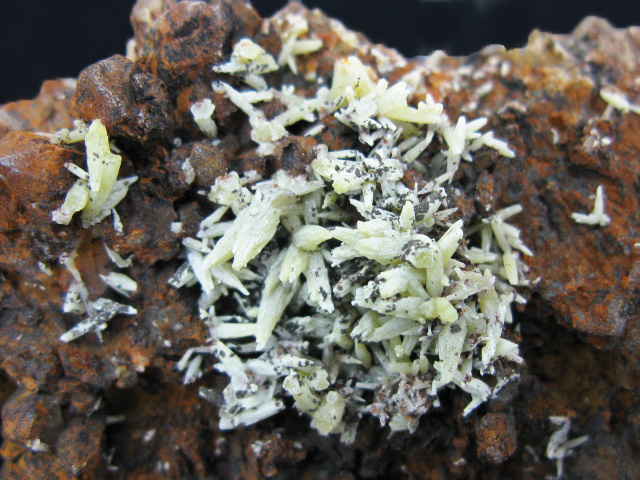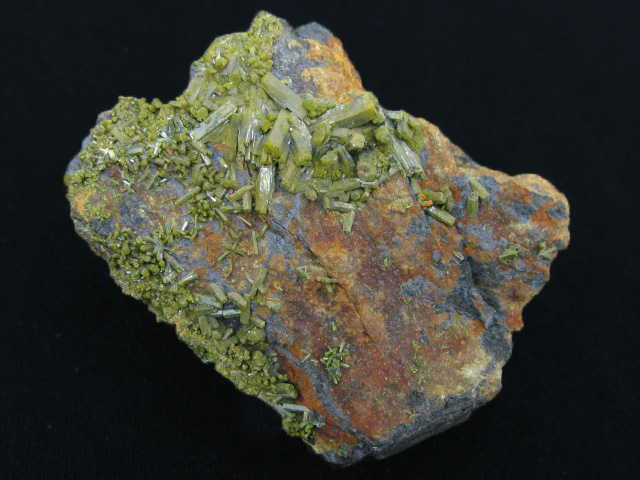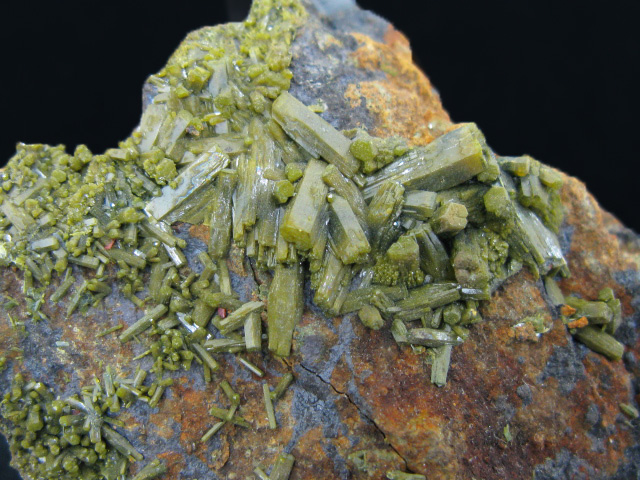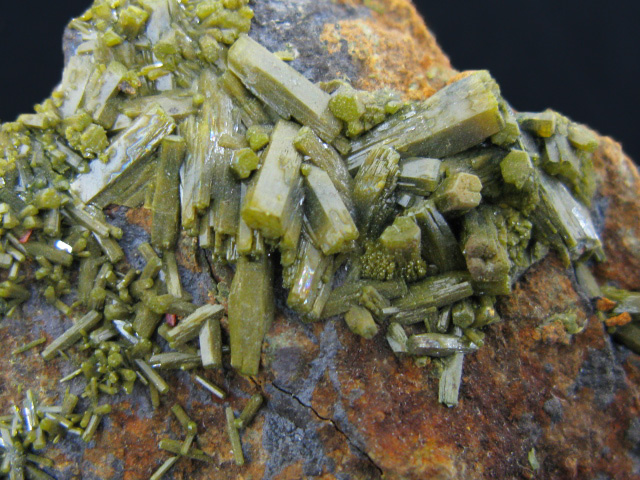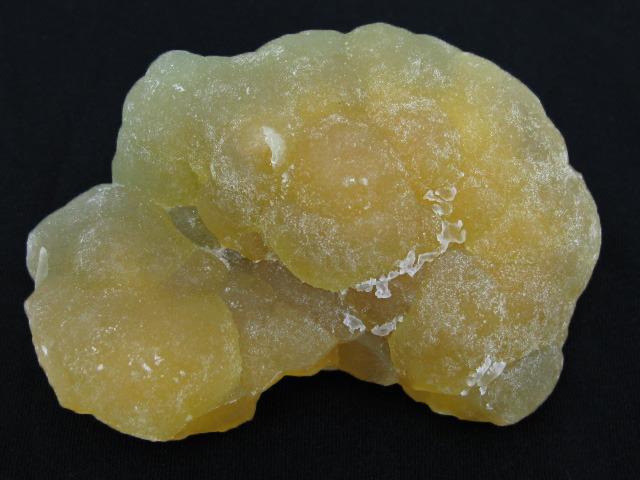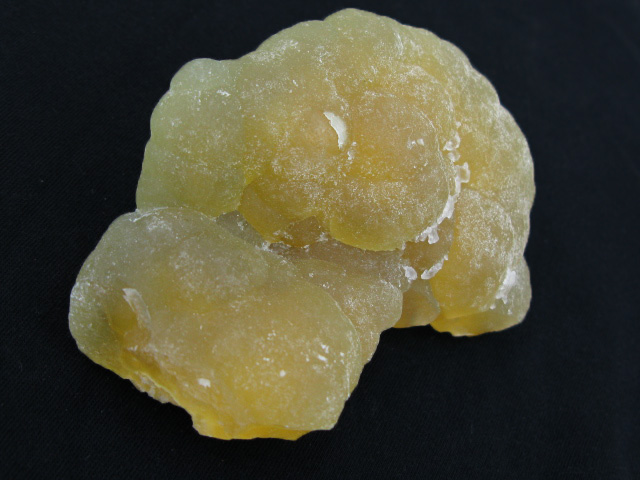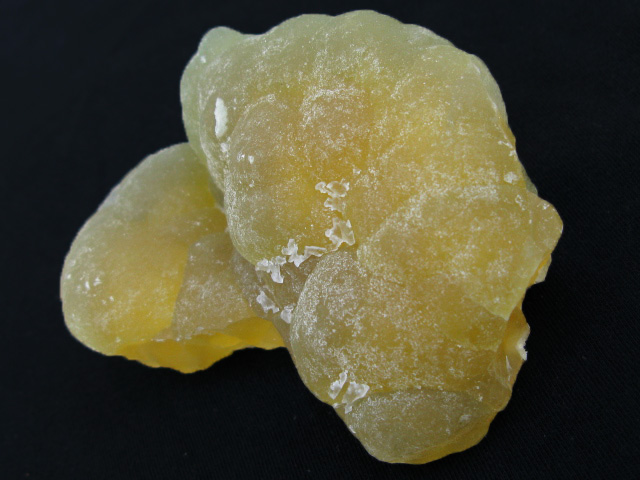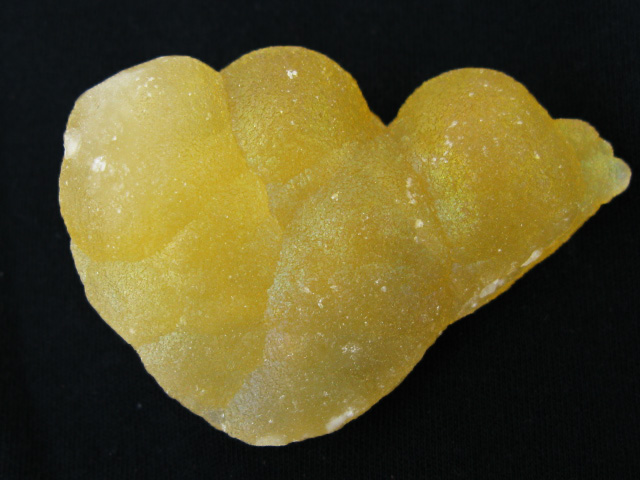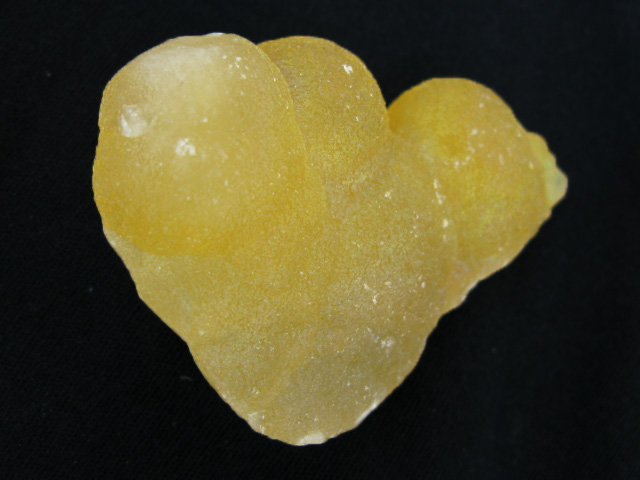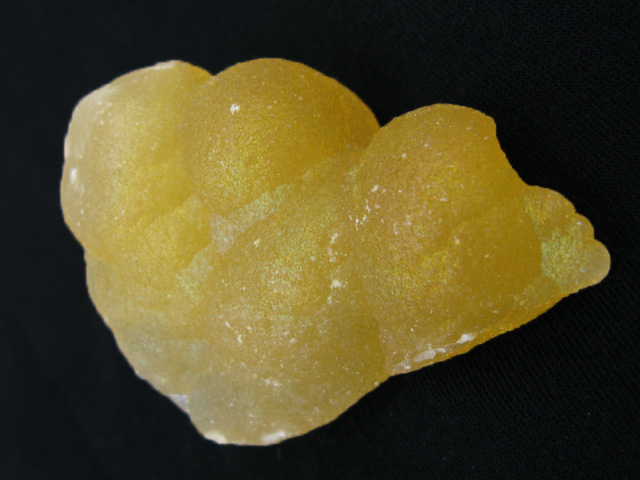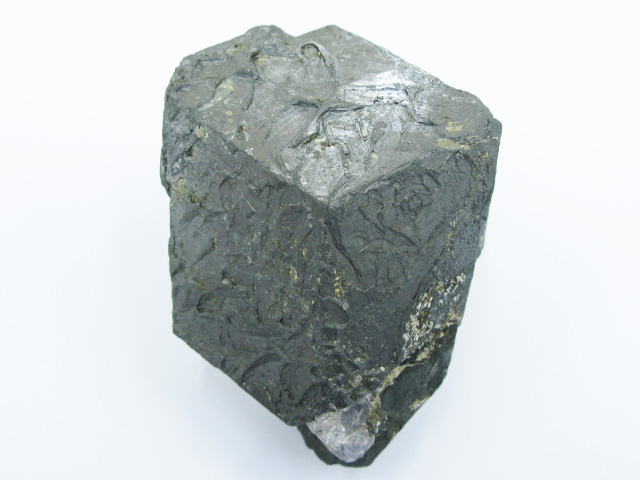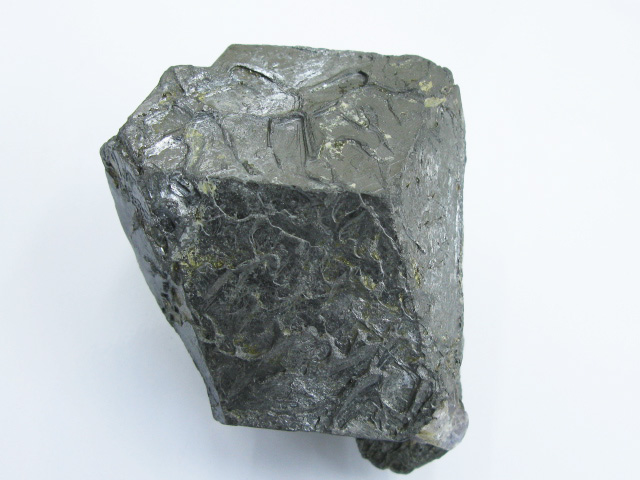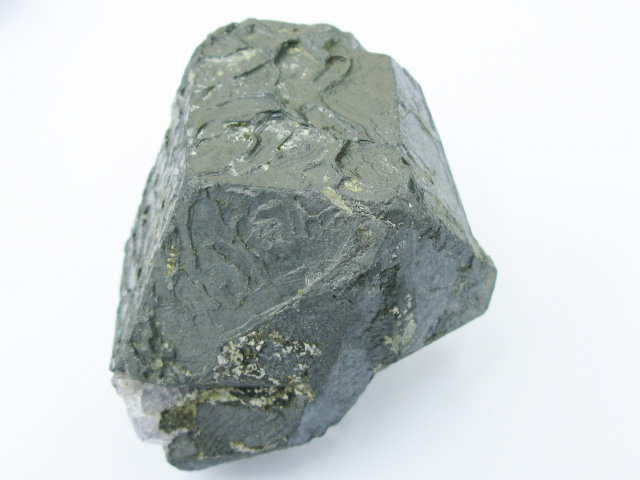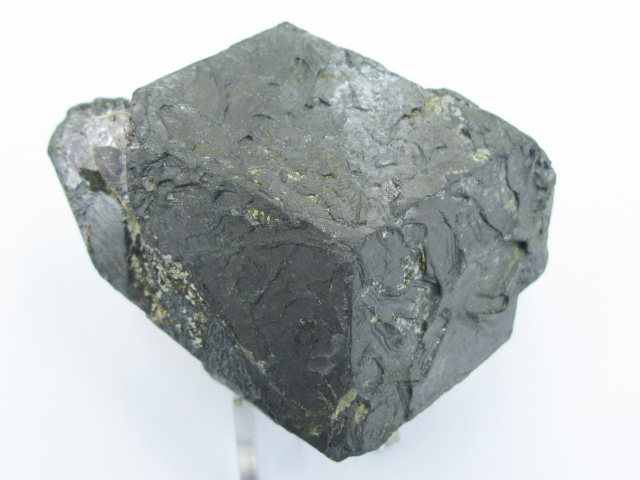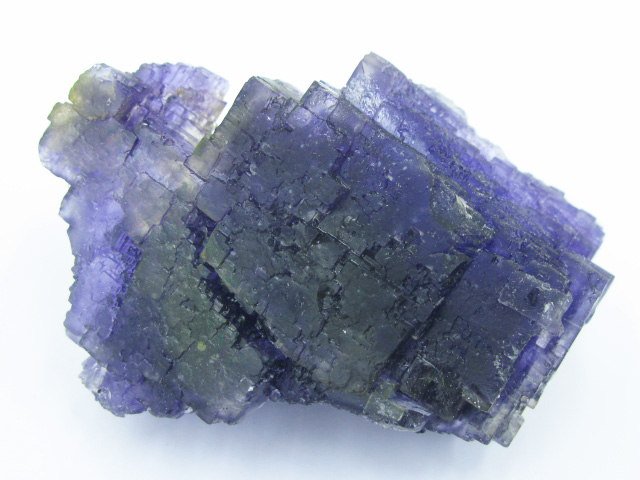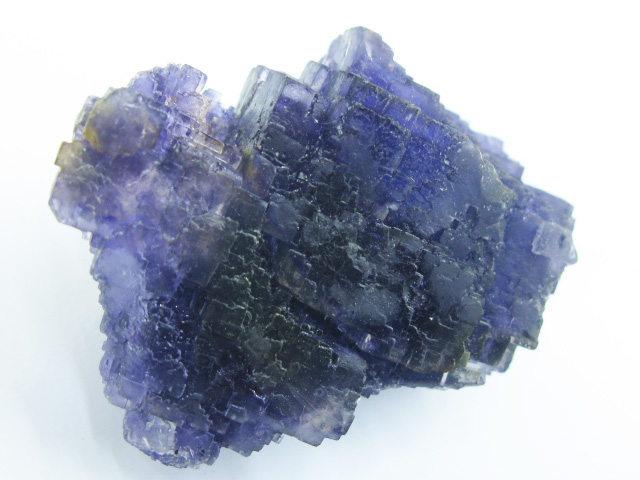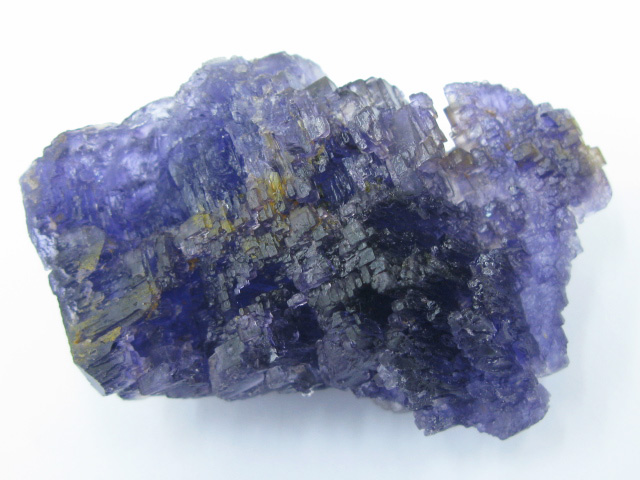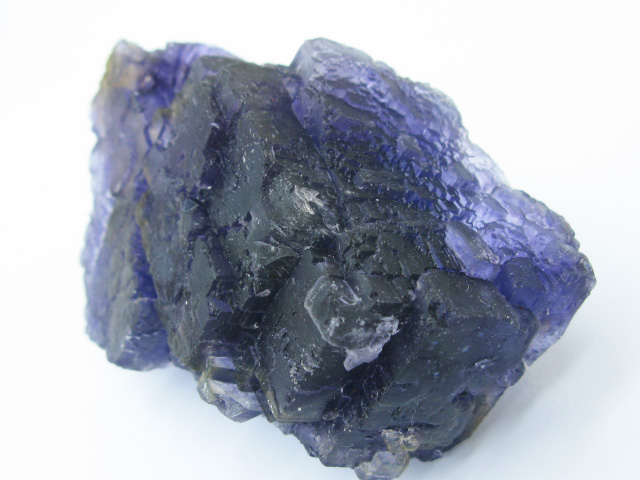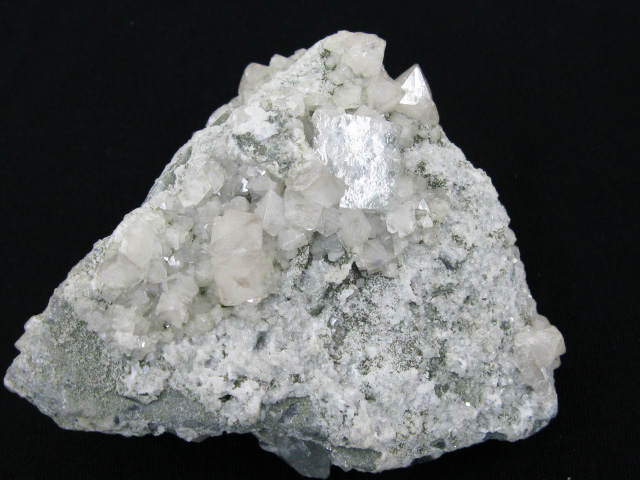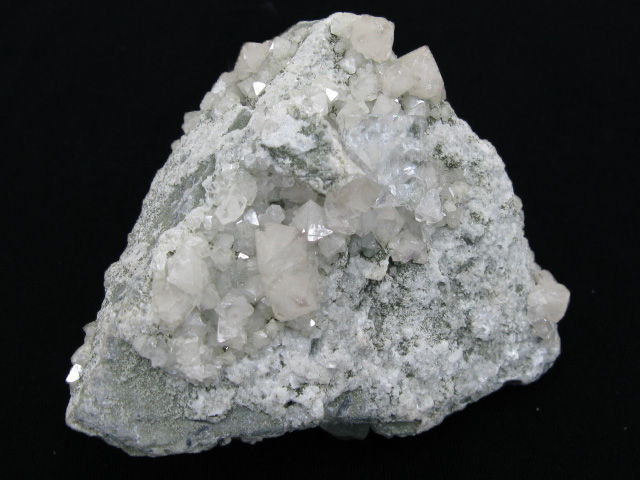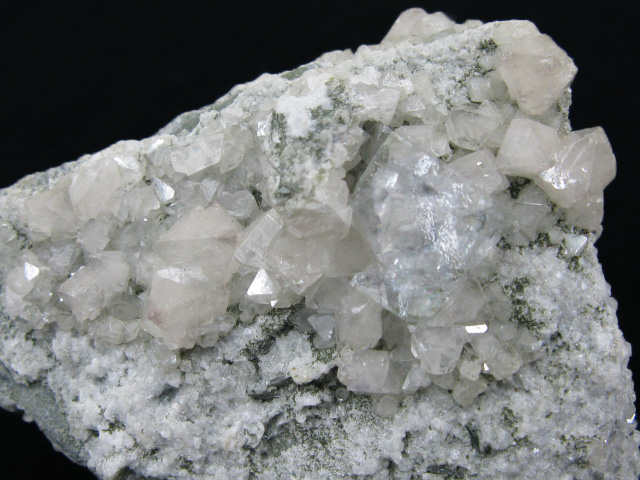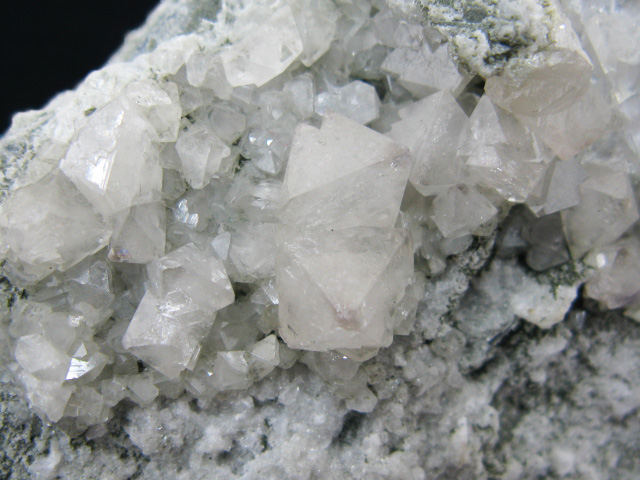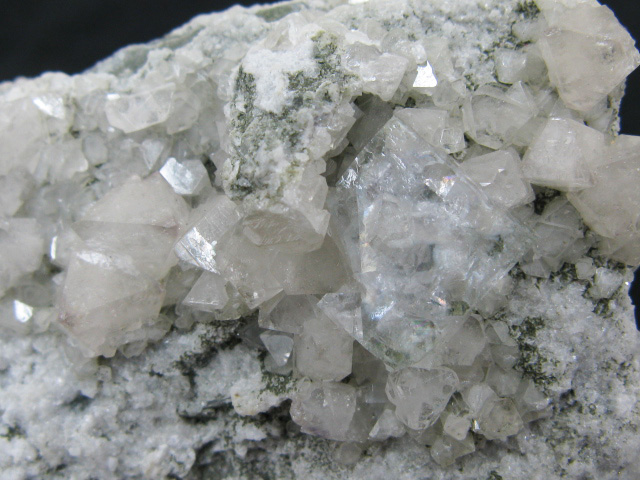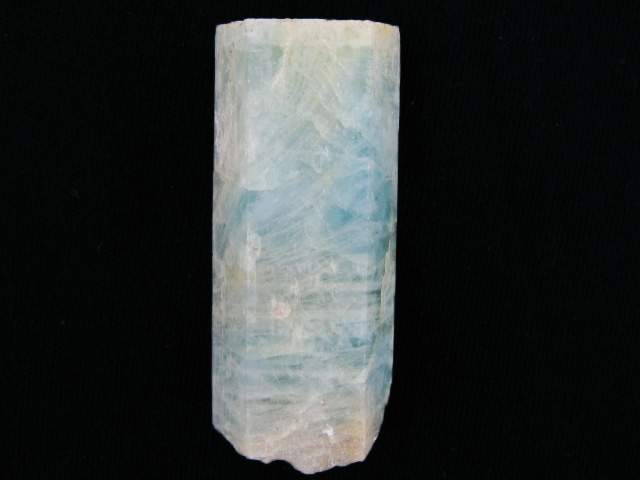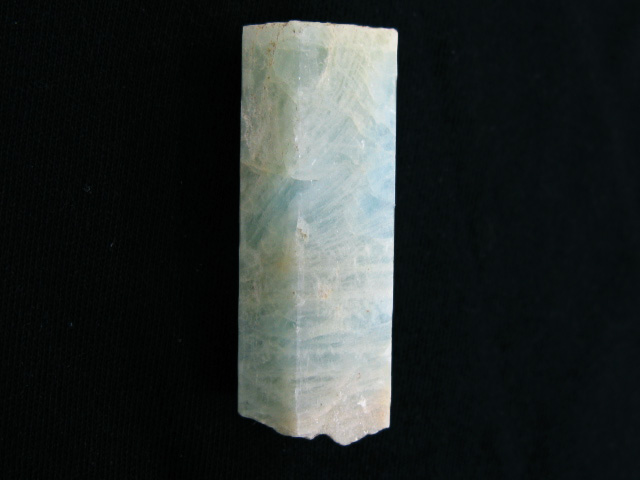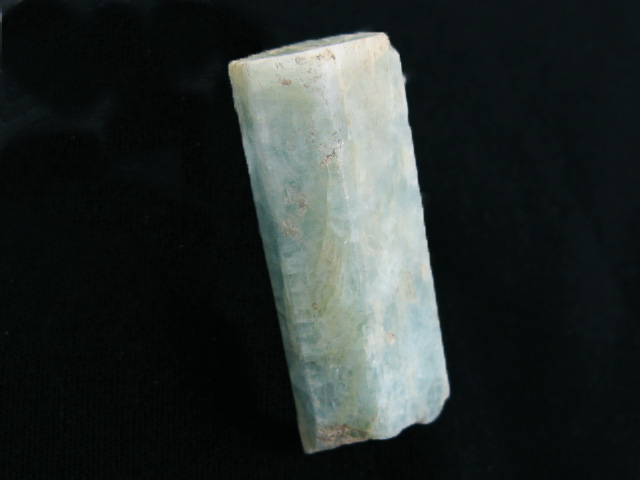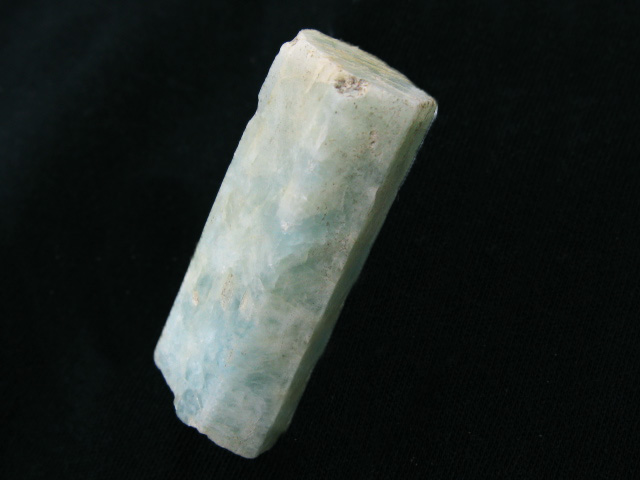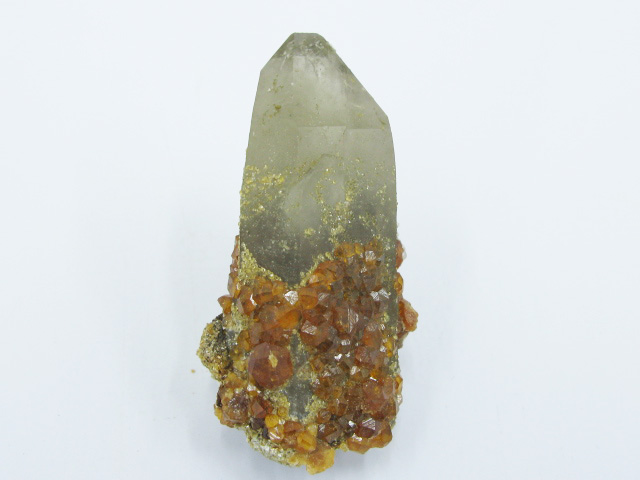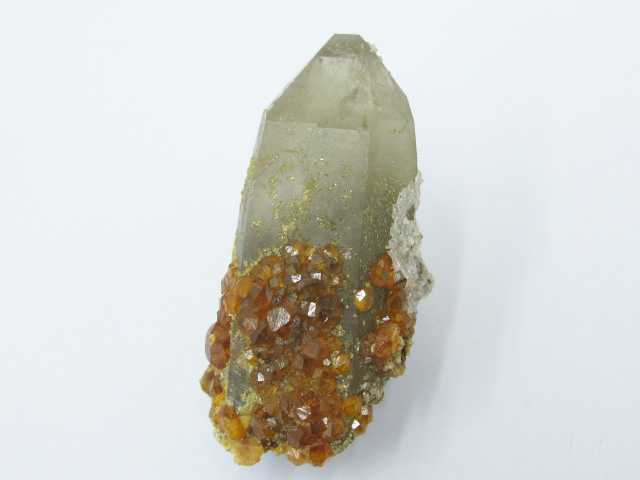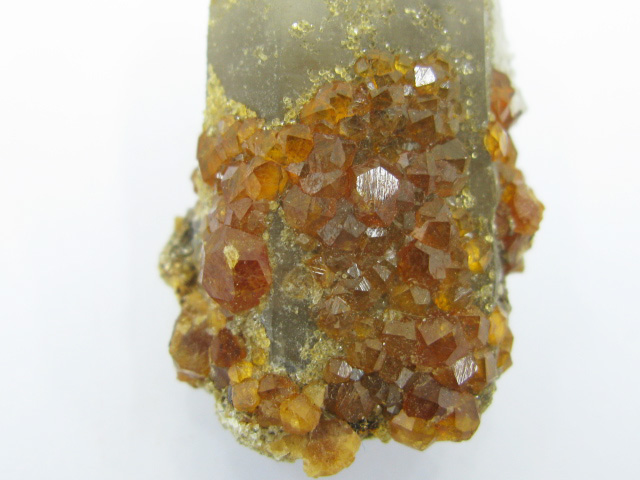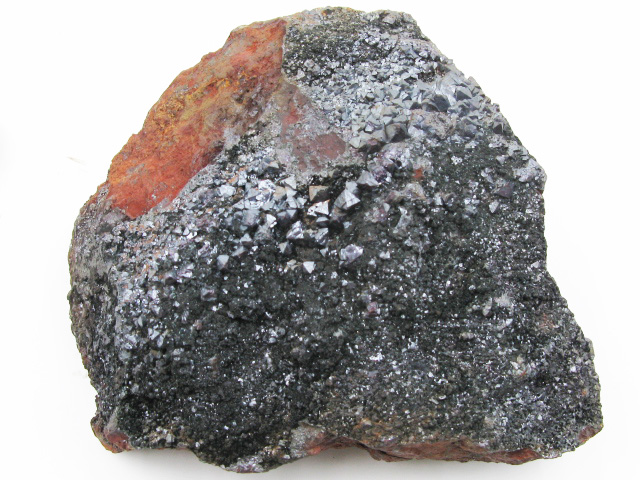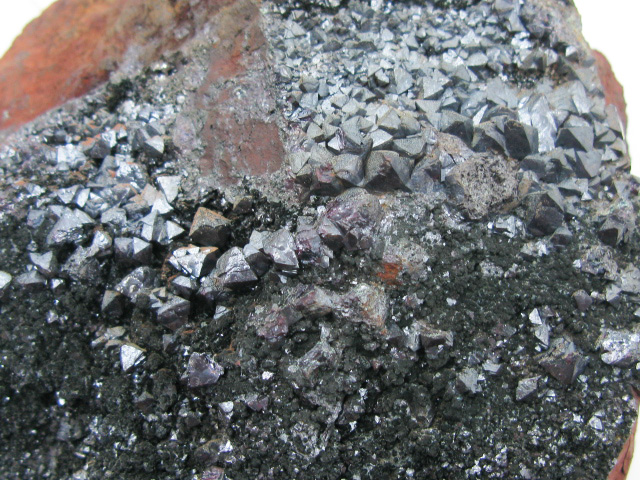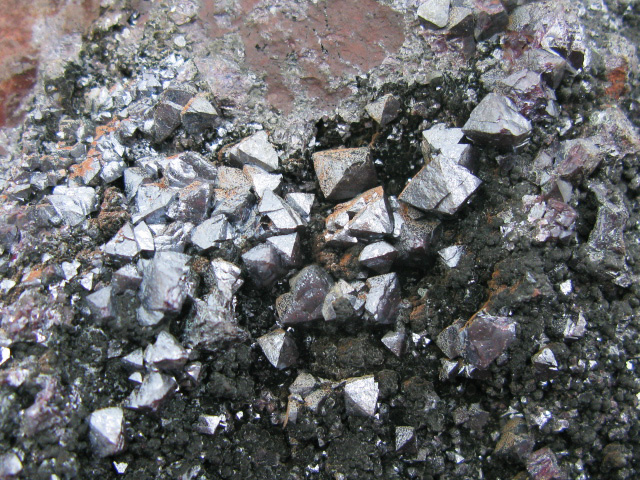Mixed Minerals from China!
This is one of the most unique specimens I have yet seen from Yindu—I have no idea when it was found, nor (to reiterate my use of the word “unique”) have I seen any others from this pocket. This has a very hefty spinel twin, it has a purple core surrounded by a vividly blue ring, all this is surrounded by a saturated green layer. The outer layer is fluorescent.
This would be less unusual from Erongo, a locality known for its large spinel twins and this green color (though I have yet to see a green twin...) however this clearly is not from that location-- the parallel purple cores are a hallmark of these oddly elongated fluorites crystals from Yindu.
While already impressive without special lighting, backlighting reveals the internal features. I have seen purple spinel twins from this mine—in fact I offered some here a few months ago, but those tended to be flatter and none even came close to this length, width, and they had totally different color (purple).
Terrible pictures, video available on request.
A nice Chinese silver, this one has reasonably thick wires,
one of which is connecting two separate pieces of matrix. Really cheap for what it is! Dimensions are
from the tip of the longest wire, to the bottom point of the matrix.
I’m always weary of fake silver, I try to find specimens with wires running through/ frozen in their matrixes (preferably NOT acanthite because the wire growth can be induced—though natural ones do exist) or with random bits or rock clinging to the wires—preferably thicker and with some sedimentation and/or oxidation as this is harder to fake. As an example of why, at the shop a couple doors down from where I purchased this one, I was shown another two specimens with bright curly wires, on a suspiciously heavy and silver-rich matrix ….. I’d be willing to bet that was just a “sculpture,” real as it may have looked.
A really nice Daye calcite. This one has a doubly terminated perfectly positioned atop a piece of matrix. There is even a small crystal just below it, giving a bit of visual balance. I have seen quite a bit of this
material at this point, though it often seems that there is always a chip in
exactly the wrong spot, or the crystals are just not pleasantly arranged, or
fully formed, or there is always a reason why it’s “almost” buyable, but then
there is some disqualifying factor….
A very pretty example of vividly blue fluorite with purple
concentrated near the corners, on transparent quartz. There is some dark
goethite or some other mineral on the quartz as well, I think it adds a nice
bit of color contrast. Internal cleave
on outermost corner, but not broken.
Not Yaogangxian! The array of common species from this mine
closely mimics Yaogangxian, as do the combinations and appearances of the
specimens from here, but this is actually a much less well known location in
Guangxi Province (directly south of Hunan) that produced specimens several
years ago. This one has a light blie fluorite crystal clinging to a quartz
crystal with a bit of accompanying calcite.
I really like this one—not huge but very saturated color.
This one has a sharp crystal with purple core and a saturated green outer zone,
all on a plate of quartz crystals. For
me what distinguishes a good Yindu fluorite from an average one is the need for
backlighting—and this one needs none for the color to really pop.
An interesting specimen from a recent discovery in Xinjiang
Prov., from a locality described as somewhere “near Aksu.” The back is a
mixture of etching and contacting, the front is something of a compound face
formed by numerous separate cubes, creating an interesting topography—it’s
really quite reminiscent of some of the southern Illinois material, a bit like
Hasties quarry.
While Daye is probably one of the most prolific calcite
producing localities in the world, this type of twin has remained uncommon at the various mines in the area. A
specimen hosts a fishtail twin on a bit of calcite, with several similarly
colored scalenohedrons.
A nice example of what has come to be referred to as
“porcelain fluorite,” perhaps because of the light blue, translucent appearance
imparted by cloudy inclusions. This one has a cubic aggregate with the typical
color, outlined by a thin purple zone, all on a quartz matrix. The main crystal is flanked by a group of
very lightly pink calcites, adding a nice bit of spatial balance and chromatic
contrast.
An interesting calcite from Fujian Province---this is
complete on both the front and back, with a portion of the bottom being a
contact, and a portion being etching—fortunately from the front, you just see
an etched bottom edge, making it look quite complete.
A nice example of smoky quartz on a cluster of feldspar
crystals, from Fujian Province. Interestingly, some of the feldspar seems to be
an epitaxial growth over earlier feldspar—as you can see in one of the
close-ups—it would also explain why some of the feldspar clusters that make up
the matrix retain the general outline of larger single crystals.
Although rather 2D there was something about this that
caught my eye in a room full of random Dachang material—iyou have to look at it
from a little closer to really appreciate it, but there was just something
really pretty about that radiating cluster of brownish creedite on a piece of
rock covered with tiny purple fluorite cubes.
I had originally intended to trim the top portion, then display it with
the main creedite cluster on top, but I decided to leave it as is. There’s lots of creedite from this locality,
quite a bit of fluorite as well, but decent combination pieces are a bit less
frequently encountered.
A very rich scheelite specimen from the Chashan Mine, in the
Xianghualing Mining Area (best known for its ultra-transparent green fluorites).
These were discovered around 2019, and were notable for the sheer quantity of
crystals on individual specimens, as well as for their unusual white color.
Prior to this find, the main occurrences had been at Mt. Xuebaoding (the
familiar orange ones, usually on mica) , Yaogangxian (dark brownish, occasionally
with purple hues, sometimes spread out small groups) and Huanggang, in Inner
Mongolia (opaque, whitish to gray.)
A thumbnail sized crystal of fluorite from the Yindu Mine,
this one has a hazy blue-purple octahedral core frozen in very transparent
green cubes. Dimensions are diagonals.
A pretty example of siderite from Bijie, in Guizhou. These have
particularly good luster, and a pleasing overall shape.
As far as the simple, more common rhombohedral carbonates go, siderite (iron) is the one that no one wants. Rhodochrosite (manganese) is highly sought after and high valued, calcite (the most common) has a strong following, but siderite….. understandably overlooked. With that said, there aren’t a whole lot of places where you can get truly good lustrous crystals—Mont St. Hiliare specimens are probably the most abundant, then Isere, France, then a number of many localities with interesting aggregates, disks, pseudomorphs, etc… but not so many with larger, lustrous single crystals.
A very pretty calcite from a recent find, this one is a
“pagoda” with a chalcopyrite coating, the chalcopyrite has naturally been
etched, resulting in the beautiful iridescence. There is a contact on the right
side, visible in the picture.
While I typically prefer crystals that don’t need strong
backlighting to appreciate, sometimes the patterns that emerge call for an
exception. This looks like a normal bluish-purple octahedrally modified cube,
but with some lighting you can quickly see that “alien eye” pattern that is so
well-liked, and reminiscent of the Erongo material.
A beautifully balanced combination specimen of calcite with
fluorite from Xianghualing. This specimen combines this mine’s characteristic
light green, water clear fluorite cubes with a centrally positioned calcite
crystal. Really quite aesthetic for this
sort of material.
A pair of calcite crystals on a cluster of fluorite
crystals. Unlike the usual greens from this mine, the fluorites have a dark
color caused by some unknown inclusion, it increases the contrast with the
white calcite—the main one sitting nicely atop the cluster of fluorites, which
are complete on both the front and back.
As someone who used to collect only pyromorphite, I always
like to see examples from unusual localities. This one comes from Jiangxi
Province, from one of the mines that produce that red quartz that has been on
the market for the last several years—the matrix is actually quartz of a
similar habit (though I don’t know if red), heavily coated with oxide
material—and it’s over that coating that the pyromorphite has managed to
crystallize.
As someone who used to collect only pyromorphite, I always
like to see example from unusual localities. This one comes from Fujian
Province, the information I was given is that it came from somewhere near
Xiamen--it's obviously not from the city itself but probably an old mine somewhere nearby. Interestingly, some other pieces
in the lot had very tiny (~2 mm) wulfenite crystals which in itself
corroborates what I was told about these not being from the more prolific
Daoping/Yangshuo localities near Gongcheng.
Sadly the wulfenite combinations only had very poorly crystalized
pyromorphte—sparse crusts at best—but I did find this one that was reasonably
well crystalized.
Botryoidal yellow fluorite from a recent find in Henan
Prov., these aren’t backlit or oiled. Interesting reference piece from this
unusual material—especially considering the bulk of Chinese fluorite is
macrocrystalline.
Botryoidal yellow fluorite from a recent find in Henan
Prov., These aren’t backlit or oiled. Interesting reference piece from this
unusual material—especially considering the bulk of Chinese fluorite is
macrocrystalline.
While specimen production in Inner Mongolia has decreased
substantially over the last few years, largely owing to a crackdown on
collecting at the Hunaggang Mine, some of the nearby localities it previously
eclipsed continue to produce at a slower pace, for example Shijiangshan (rare borates),
Yindu (fluorite), or in this case, Dongwu Qi. This is a hefty magnetite crystal with
interesting surface texture—like virtually all of these, it is only displayable
from one side (it grew tightly packed along side others.) There has been more of this material recently
but finding examples with a satisfactory level of completeness and decent shape
isn’t easy.
An interesting specimen from a recent discovery in Xinjiang
Prov., from a locality described as somewhere “near Aksu.” The back is a
mixture of etching and contacting, the front is something of a compound face
formed by numerous separate cubes, creating an interesting topography—it’s
really quite reminiscent of some of the southern Illinois material, a bit like
Hasties quarry.
This one is interesting etched all around-- I've included both photos from the front, and one from the back (last picture)
The color is purple and a bit darker in person—light is passing through making it seem a bit lighter.
A rich scheelite specimen from the Chashan Mine, in the
Xianghualing Mining Area, best known for its ultra-transparent green fluorites. There is actually one of those transparent fluorites on the display face.
These were discovered around 2019, and were notable for the sheer quantity of
crystals on individual specimens, as well as for their unusual white color.
Prior to this find, the main occurrences had been at Mt. Xuebaoding (the
familiar orange ones, usually on mica) , Yaogangxian (dark brownish, occasionally
with purple hues, sometimes spread out small groups) and Huanggang, in Inner
Mongolia (opaque, whitish to gray.)
Not a great aqua specimen, but a cool locality nonetheless,
and the only terminated example I have seen from here. There is a pegmatite
somewhere just outside the town of Nanjiang Zhen where a few local people
collect large black almandine (I think) garnets and aquamarine prisms, this is
reasonable close to the autunite locality.
Some of the aquas actually reach a decent size, but they are all heavily
included like this. I’ve also seen some
columbite-tantalite from here. I know some people collect weird beryl localities, so I figured I'd post it.

